The Amazing Monarch Butterfly Migration
Each year, when the days become shorter and temperatures fall, a magnificent phenomenon takes place all across eastern Canada and the United States. Millions of Monarch butterflies are on the move, leaving their summer breeding grounds to head to their winter home in the Sierra Madres mountains of Central Mexico. It’s the amazing Monarch Butterfly Migration!
It can take up to two months for these delicate creatures to complete this epic journey, with some of them traveling up to 2,500 miles. Unlike other creatures that migrate, however, these particular butterflies will not return to see their summer home again.
On To New Adventures contains affiliate links and is a member of the Amazon Services LLC Associates program. If you make a purchase through our affiliate links, we may receive compensation from the company at no cost to you. Read our disclaimer for more information.
As an animal lover, visiting the Monarch Butterfly Biosphere Reserve in Michoacán, Mexico, was high on my list. The logistics of traveling to this UNESCO World Heritage site on one’s own can be a bit complicated, so David and I signed on for a tour. We selected Holbrook Travel, a company that specializes in educational travel and natural history tours and has a reputation for excellence.
Once we made contact and sent in our deposit, it was like we had stepped onto a well-oiled machine. The planning was all done for us and we simply were able to relax and enjoy the adventure.
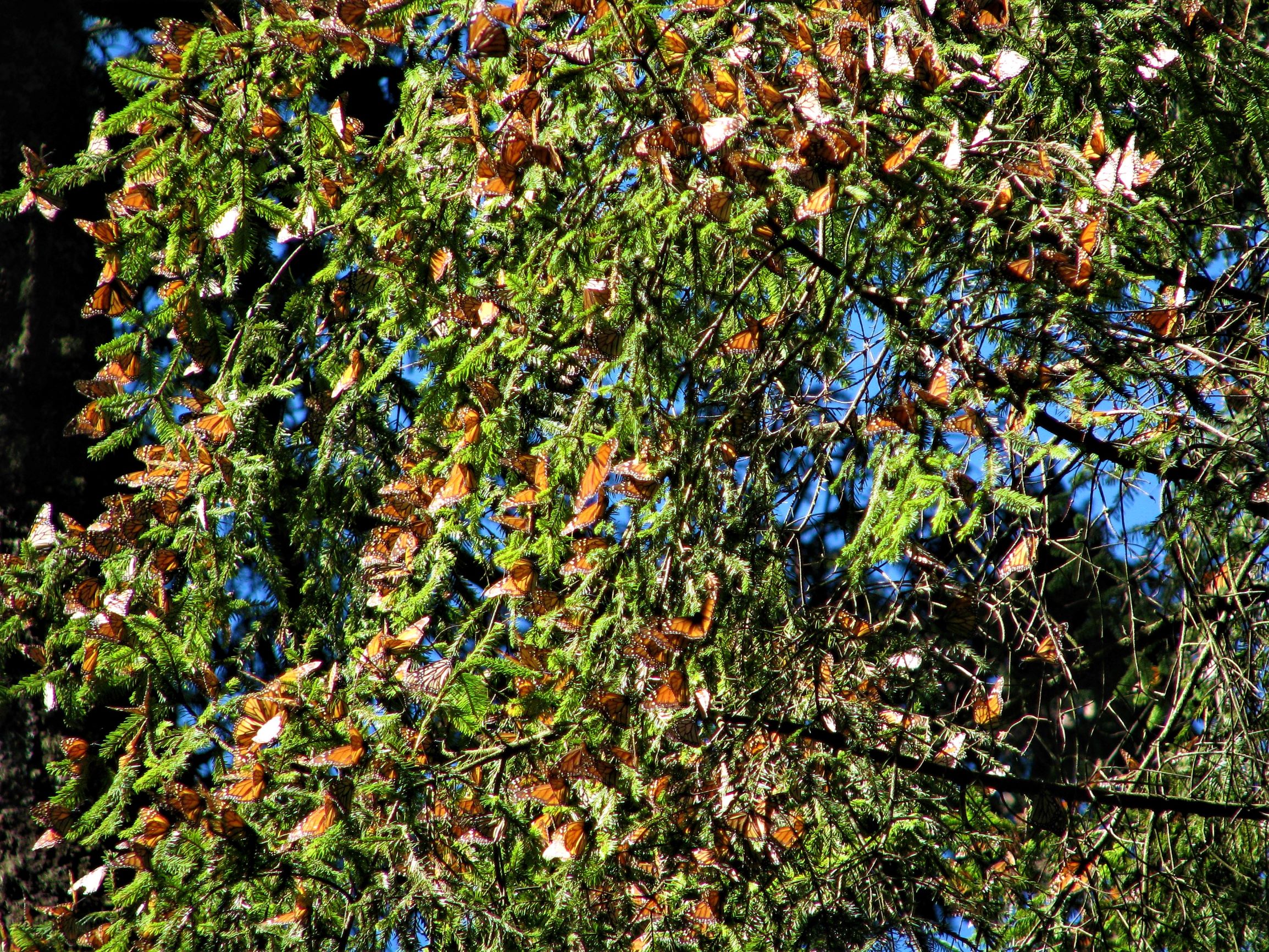
Zócalo Square, Mexico City
We flew into the airport at Mexico City, where a travel representative from Holbrook met us and transported us to our hotel. We checked into the Hotel Zócalo Central, located right on the Zócalo, the largest plaza in Latin America.
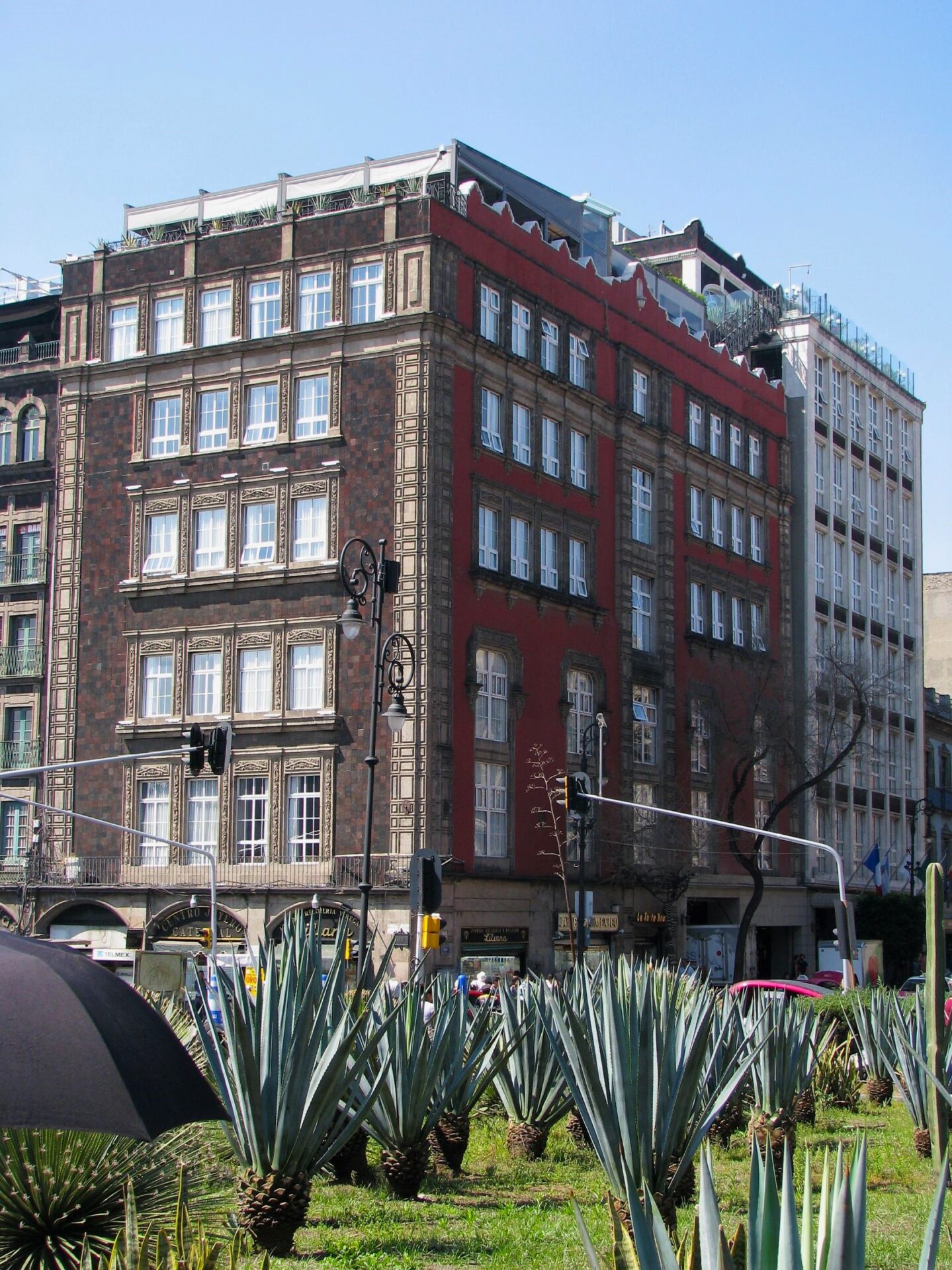
The plaza has been a gathering place for Mexicans since the days of the Aztecs, when people came together for rituals and ceremonies. Today, people make their way to the Zócalo to take part in parades, concerts, festivals, and government protests.
The Palacio Nacional (National Palace) is located on the eastern side of the plaza. The Catedral Metropolitana (full name in English: Metropolitan Cathedral of the Assumption of the Most Blessed Virgin Mary) is on the northern border. Government offices line the southern border and hotels (including ours) and elaborate stores are to the east.

We enjoyed watching street dancers perform in the Zócalo. Known as Concheros, these elaborately dressed dancers perform traditional dances from Mexico’s Aztec past. The Concheros are decked out in traditional costumes and body paint. Their ankles are wrapped with cuffs covered with shells from the ayoyote tree that provide much of the musical beat for the dance.
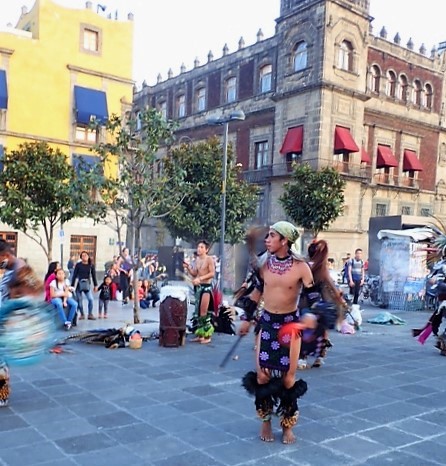
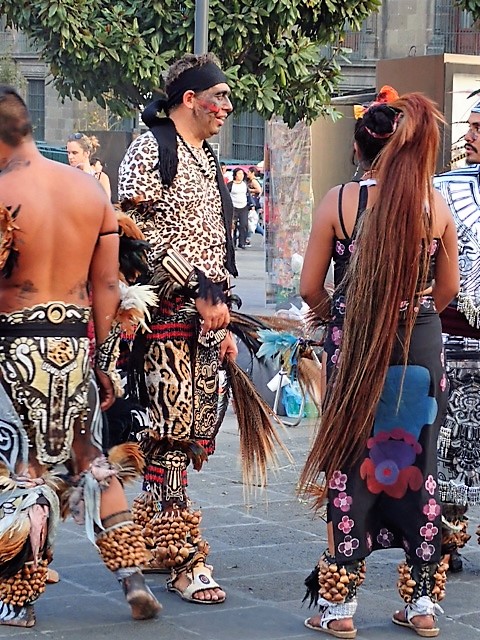
We were humbled by the overwhelming sense of history we experienced here. The main square and side streets were bustling with people and families. We felt perfectly safe in the public areas.
The sanctuaries where the Monarchs gather for the winter are located about 100 km northwest of Mexico City. Learn about more of the best day trips form Mexico City here.
Migration of the Monarch Butterfly
The majority of Monarchs have a lifespan of 4-6 weeks. However, at the end of the summer, a “super generation” of butterflies are born. This generation is the only one that makes the long trek to Mexico, and they have adapted to survive for up to 9 months.
The “super generation” feed voraciously in the north to store up energy for their journey, beginning their migration in September and October. Instinct drives them toward an area of the world where they have never been, and somehow they end up clustering together for the winter on the very same trees where their great-great-great-grandparents clustered the year before.
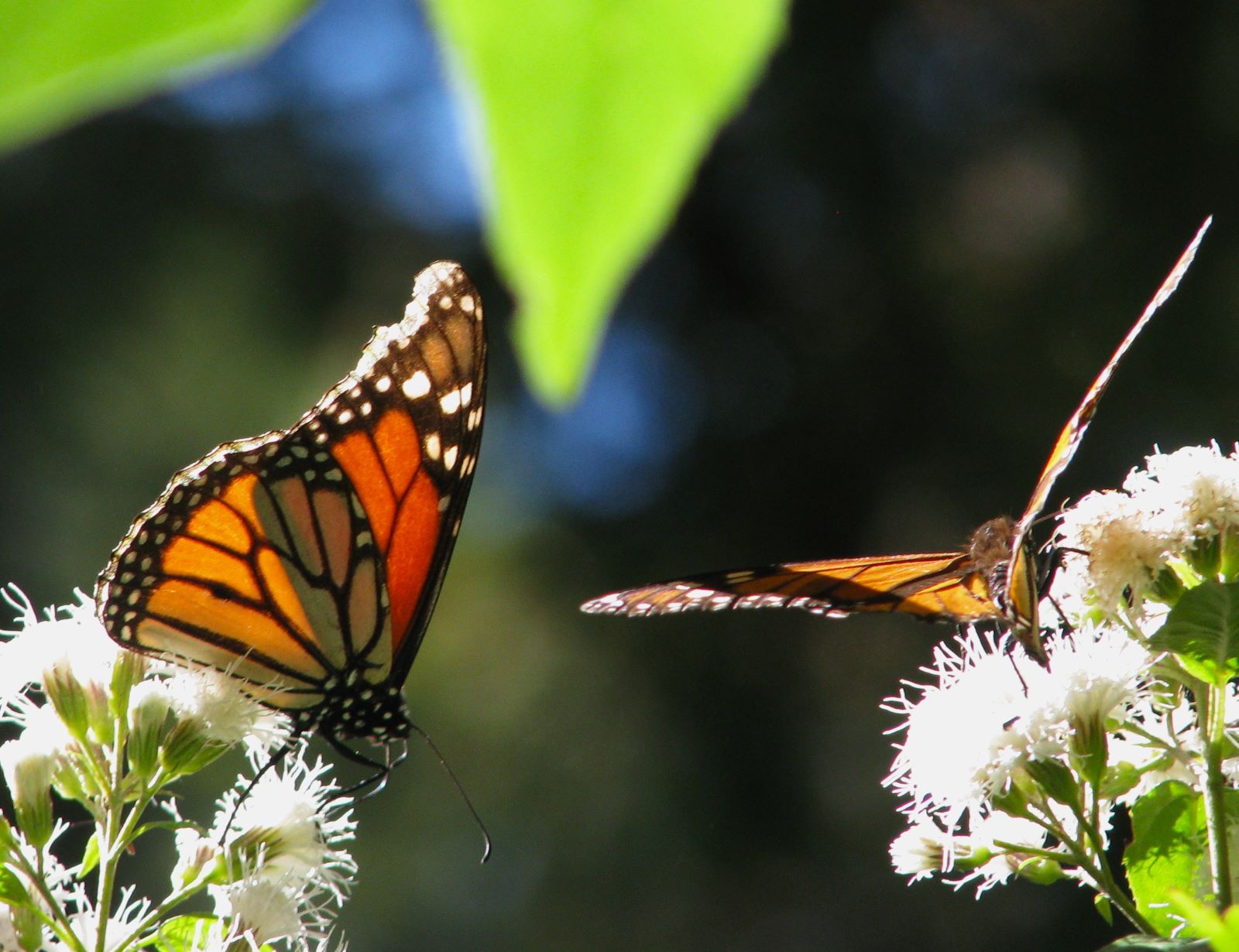
Monarch butterflies arrive in their wintering grounds in early November, coinciding with Mexico’s most spectacular festival, Dia de los Muertos, or Day of the Dead. People living in the mountains of Mexico have long believed that Monarchs are the souls of departed ancestors visiting from the afterlife. Learn more about this joyful celebration and Day of the Dead Symbols and Traditions.
Monarchs are very specific about selecting their wintering grounds. They roost in oyamel fir trees, at an elevation almost two miles above sea level. The oyemal forests are somewhat humid, ensuring that the butterflies won’t dry out.
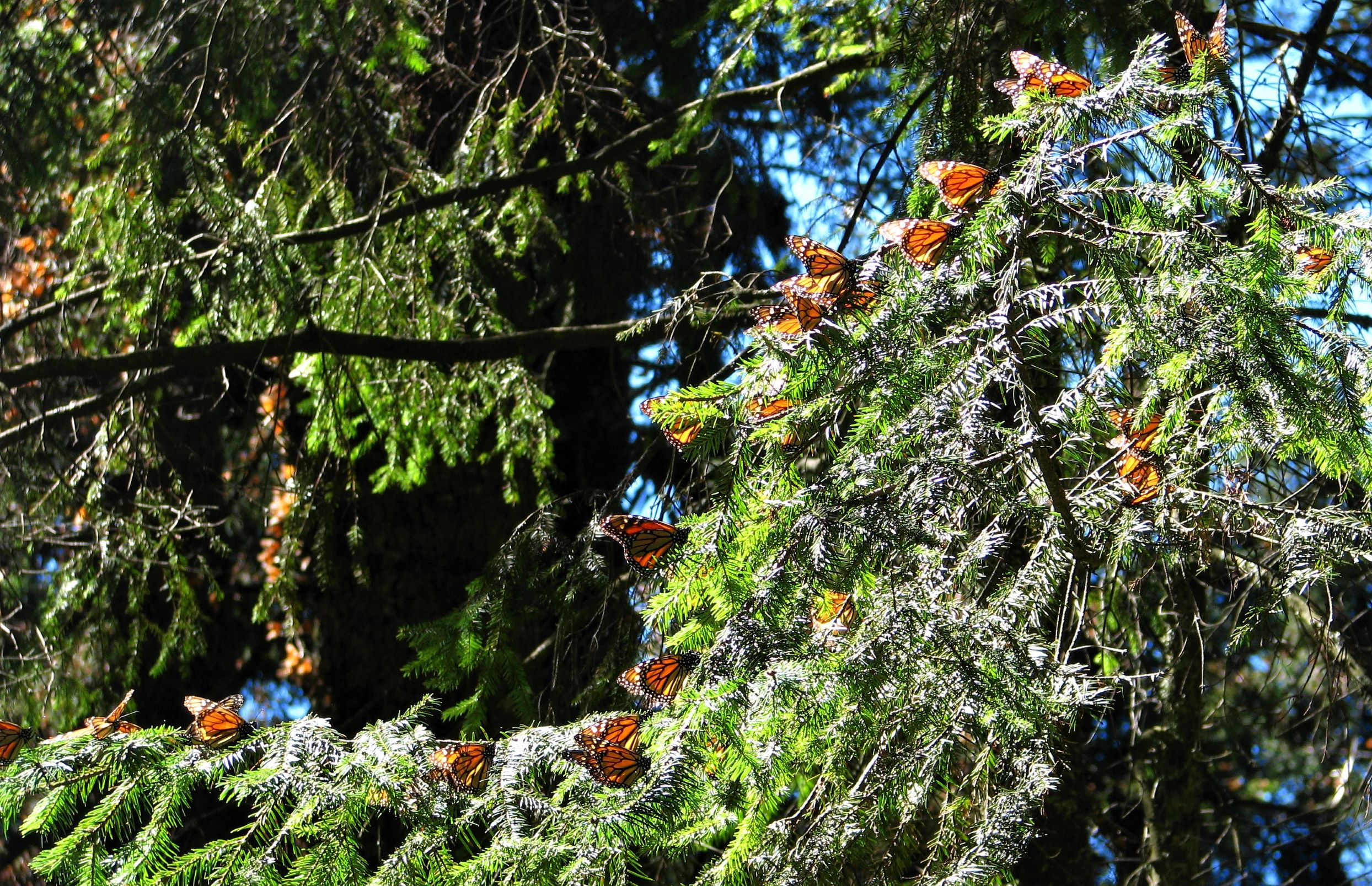
Days are sunny enough so that the butterflies don’t expend too much energy trying to stay warm, yet there are numerous shady spots so the butterflies don’t overheat. Flowers are nearby to provide nectar, and there needs to be a readily available source of water. There are only about a dozen isolated forests, high in the mountains of Mexico, that meet all of these criteria.
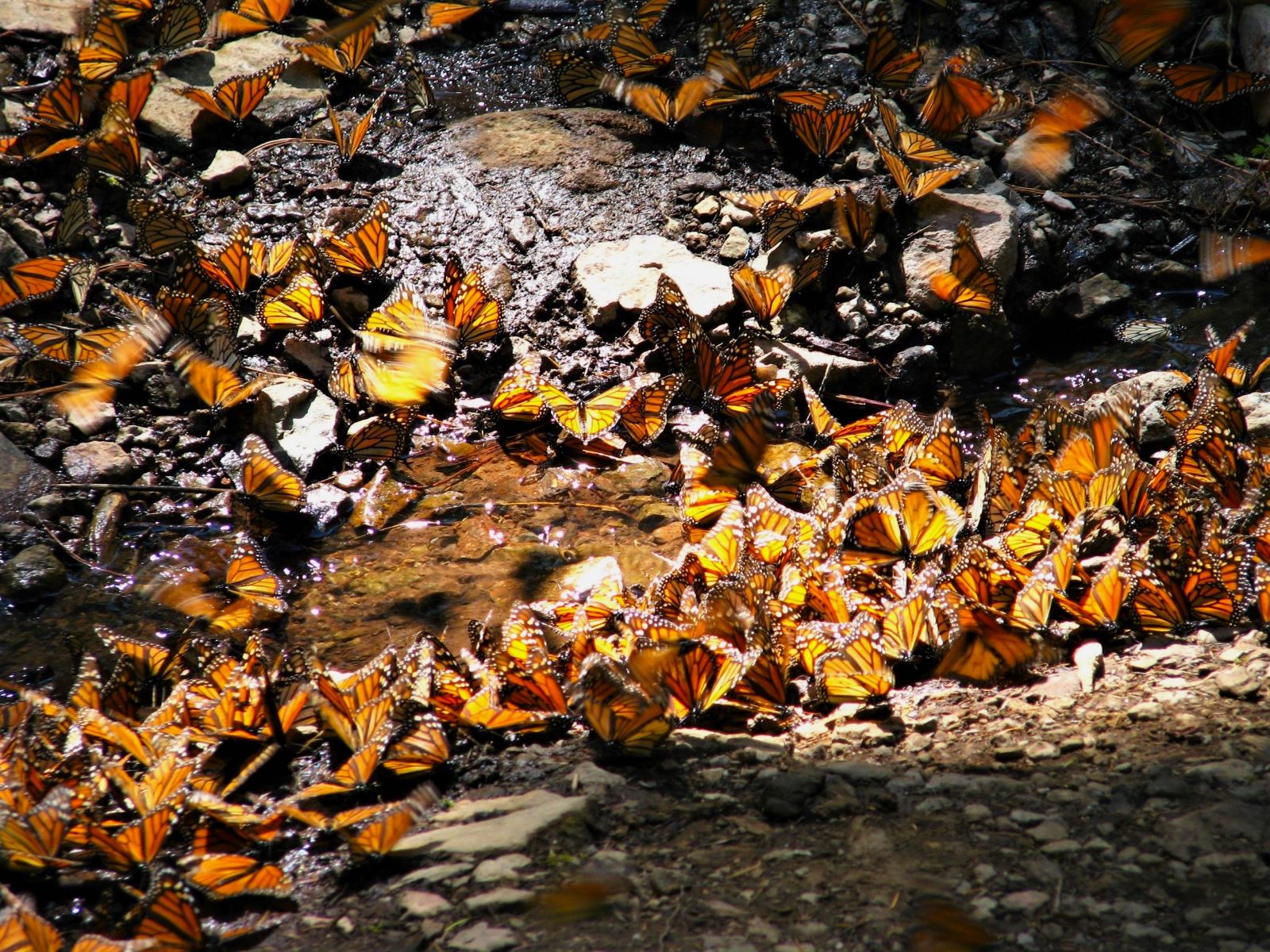
After wintering in Mexico, this long-lived generation of Monarchs will begin the migration back north in March, but they won’t get far. They lay their eggs on milkweed plants and die shortly after leaving the butterfly reserves.
While the southward trip is made by the single super generation; the northward journey is completed by multiple generations of short-lived butterflies that are born, breed, and die as they relay their way back north.
The Town Of Angangueo
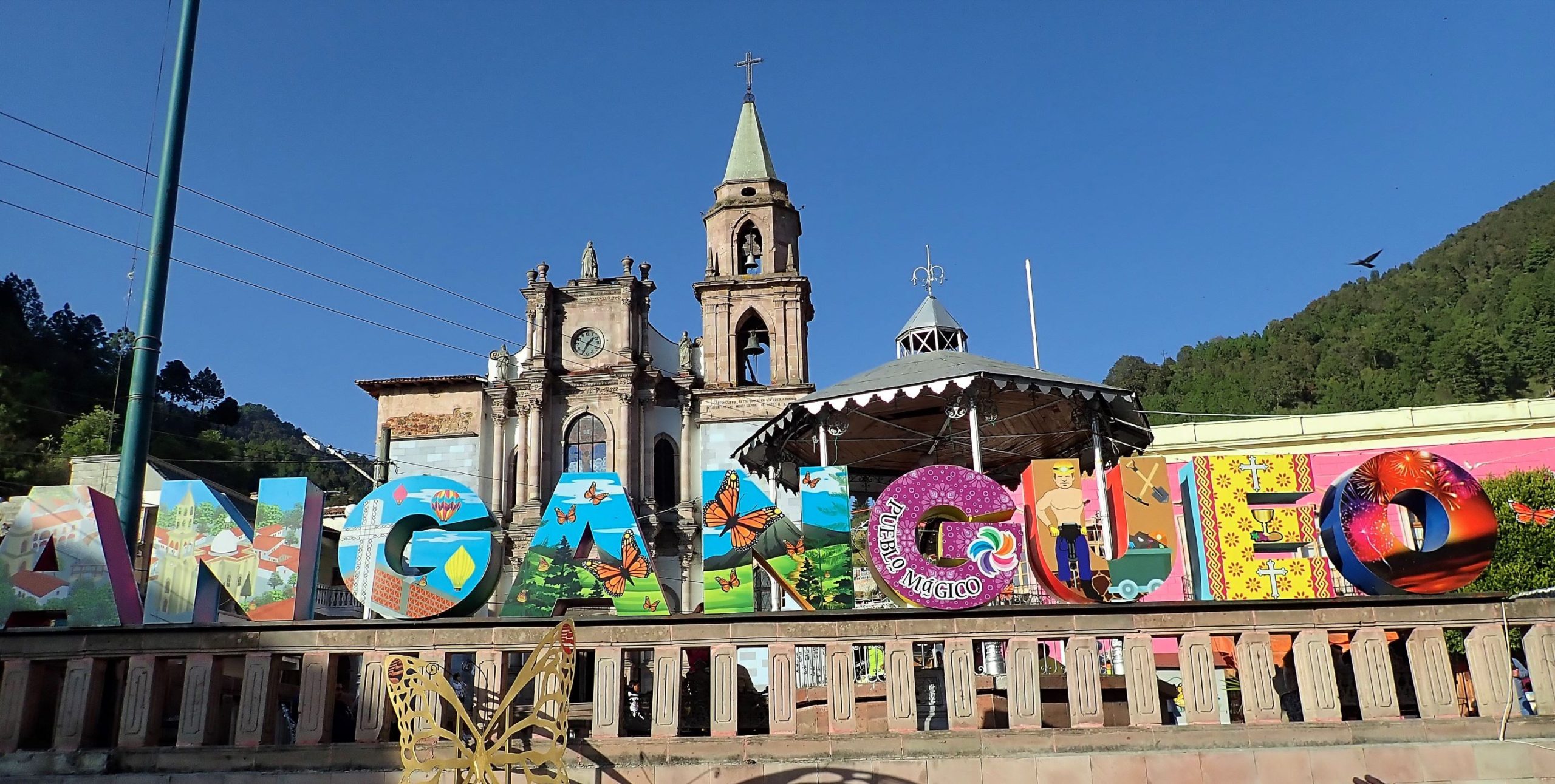
The following day, our group boarded a surprisingly comfortable tour bus and traveled about 100 miles west of Mexico City to the charming town of Angangueo. Located in a high mountain ravine in the Mexican state of Michoacán, Angangueo was originally a mining town. The people who live here are now heavily dependent on the tourism related to the Monarchs.
We stayed a the Hotel Don Bruno, a simple hotel with balconies overlooking courtyard gardens and the red-tile roofs of the village. David and I ended up on the 5th floor: quite a climb up all of the flights of stairs with our suitcases.
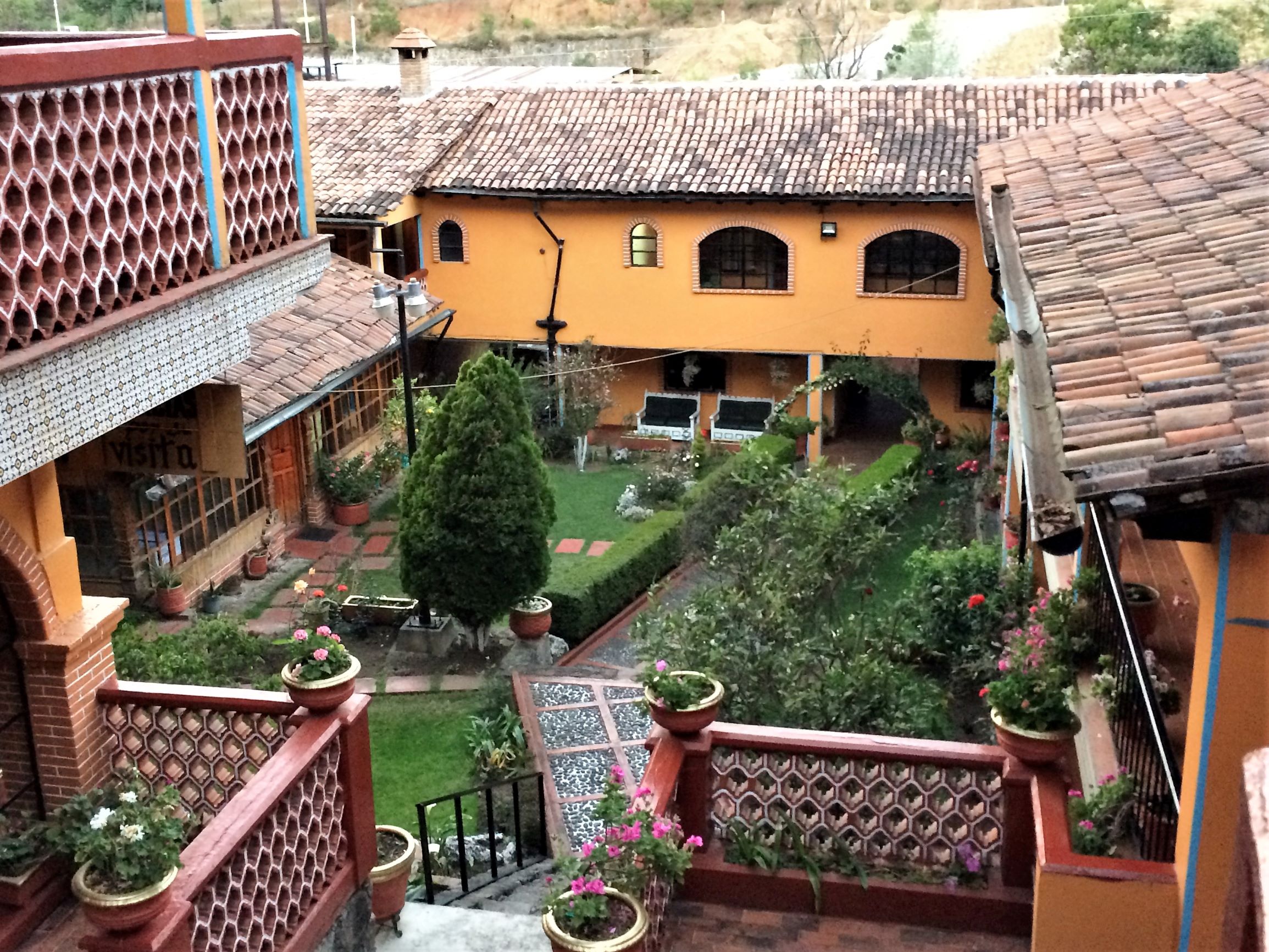
We thoroughly enjoyed our shower! It was the only tiled shower in the hotel, very spacious compared to those of the others in our party, and closest to the outdoor water heater. We enjoyed an abundance of hot water which wasn’t true for everyone. Rooms are unheated, and we were told to expect night time temperatures in the 30’s. Thankfully we visited during a warm spell and the nights were nowhere near that cold.
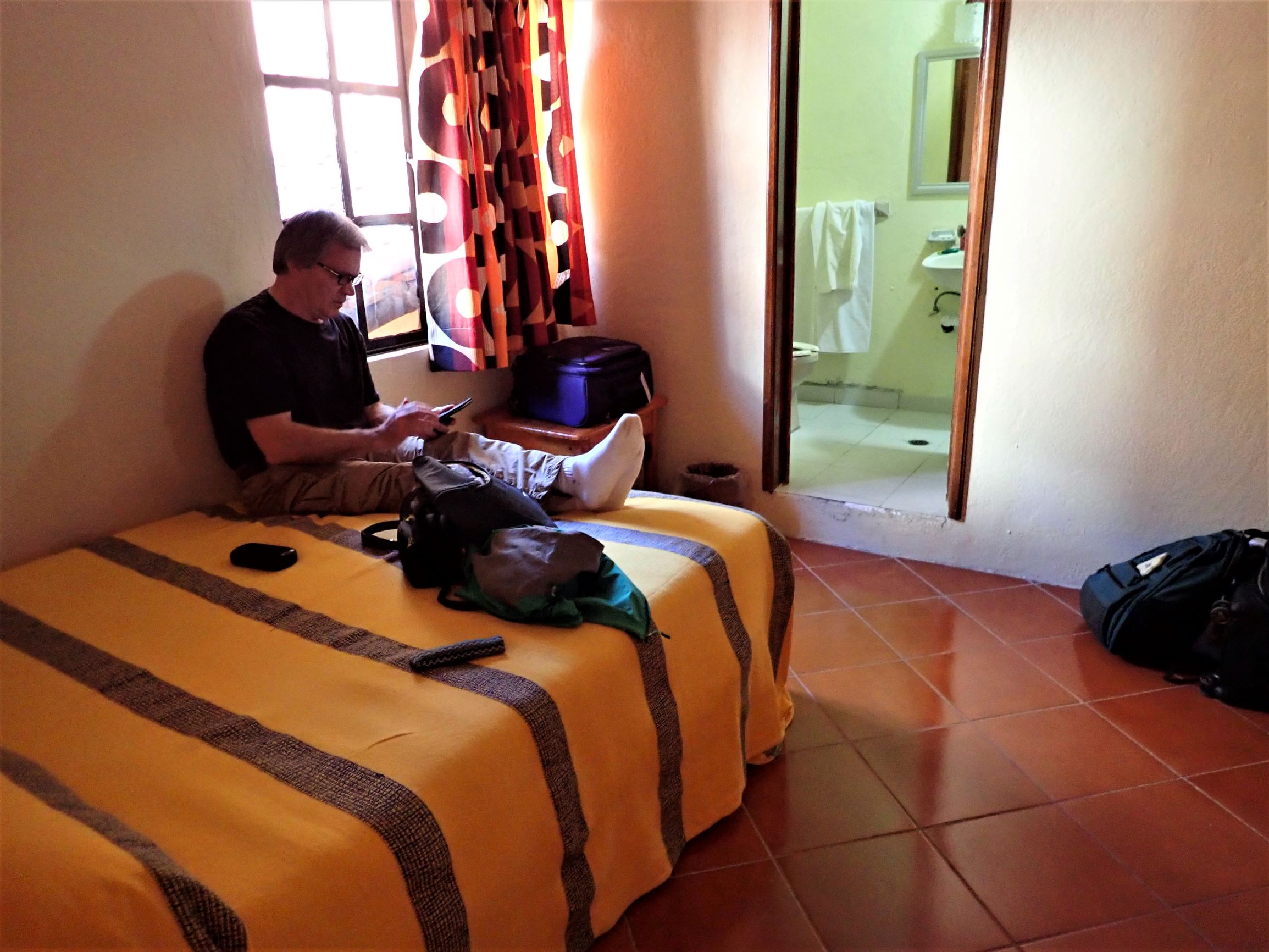

Hotel Don Bruno is located close to the heart of town. Getting there involved a steep uphill climb, but we thoroughly enjoyed walking past the colorful houses on the cobblestone streets that lead to the lovely Parish of San Simón .
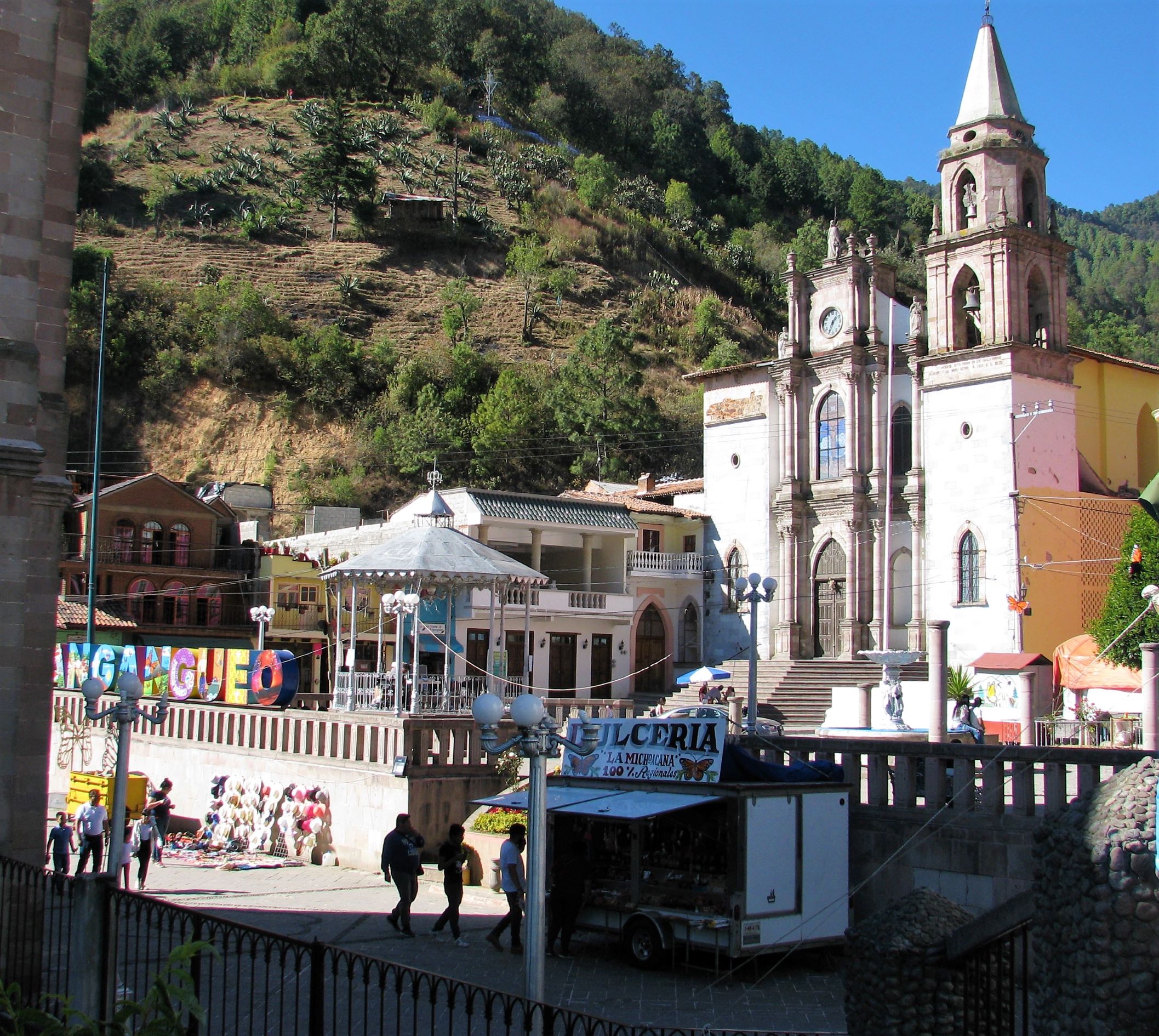
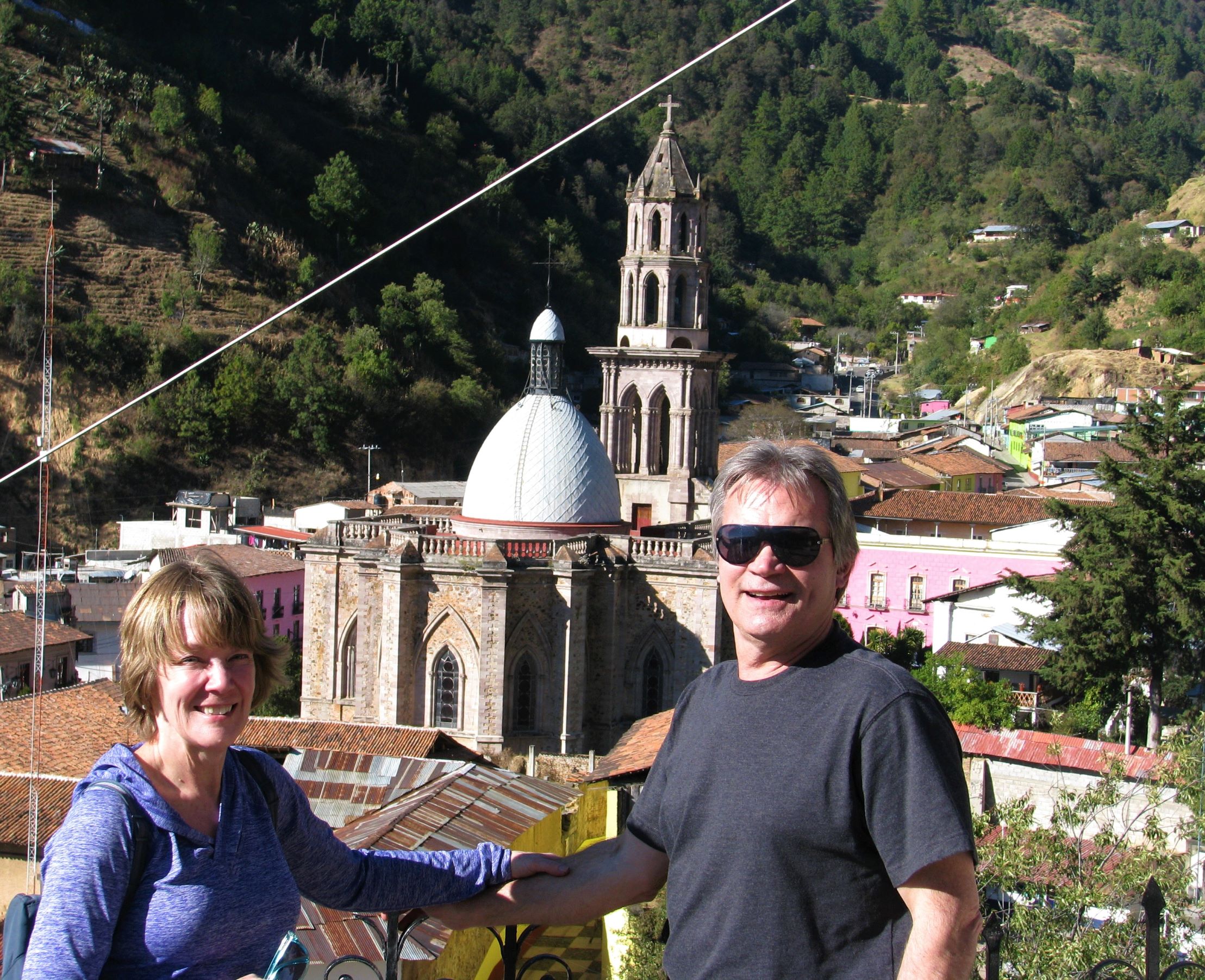
While we like to think of ourselves as travelers who journey off of the beaten path and mingle with locals, it doesn’t change the fact that there are times when the touristy photo op is simply too much to resist.
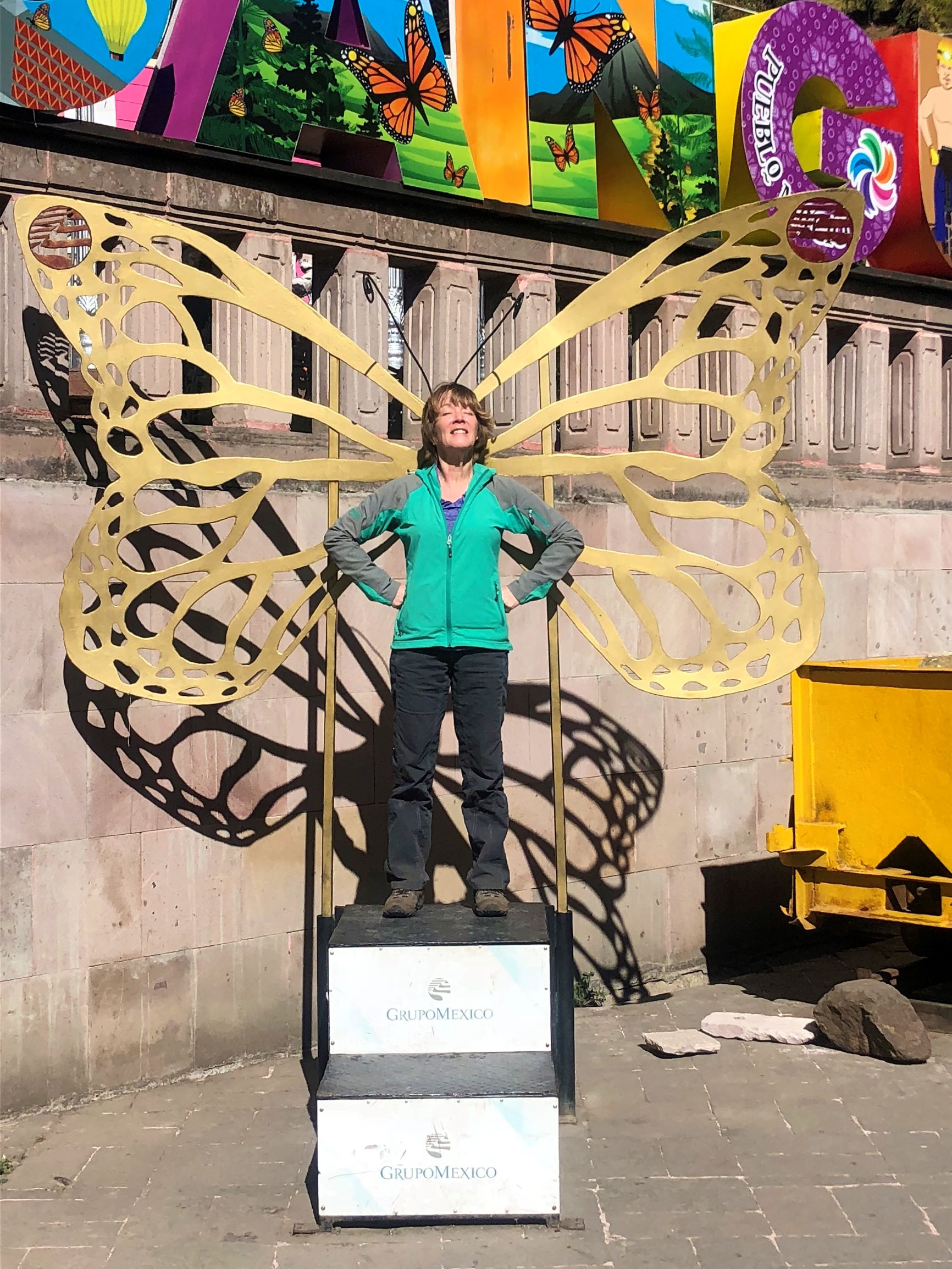
Sierra Chincua Butterfly Sanctuary
The following morning, we drove further up the mountain to an elevation of about 10,000 feet. The Sierra Chincua Butterfly Sanctuary is one of several monarch roosting sites in the region.
It’s possible to rent a horse to get to the area where the butterflies roost for the night. David and I opted to walk in. The hike was a bit strenuous, as it was mostly uphill and we were not fully adjusted to the elevation. There were plenty of opportunities to catch our breath and the overlooks along the walking trail were stunning.
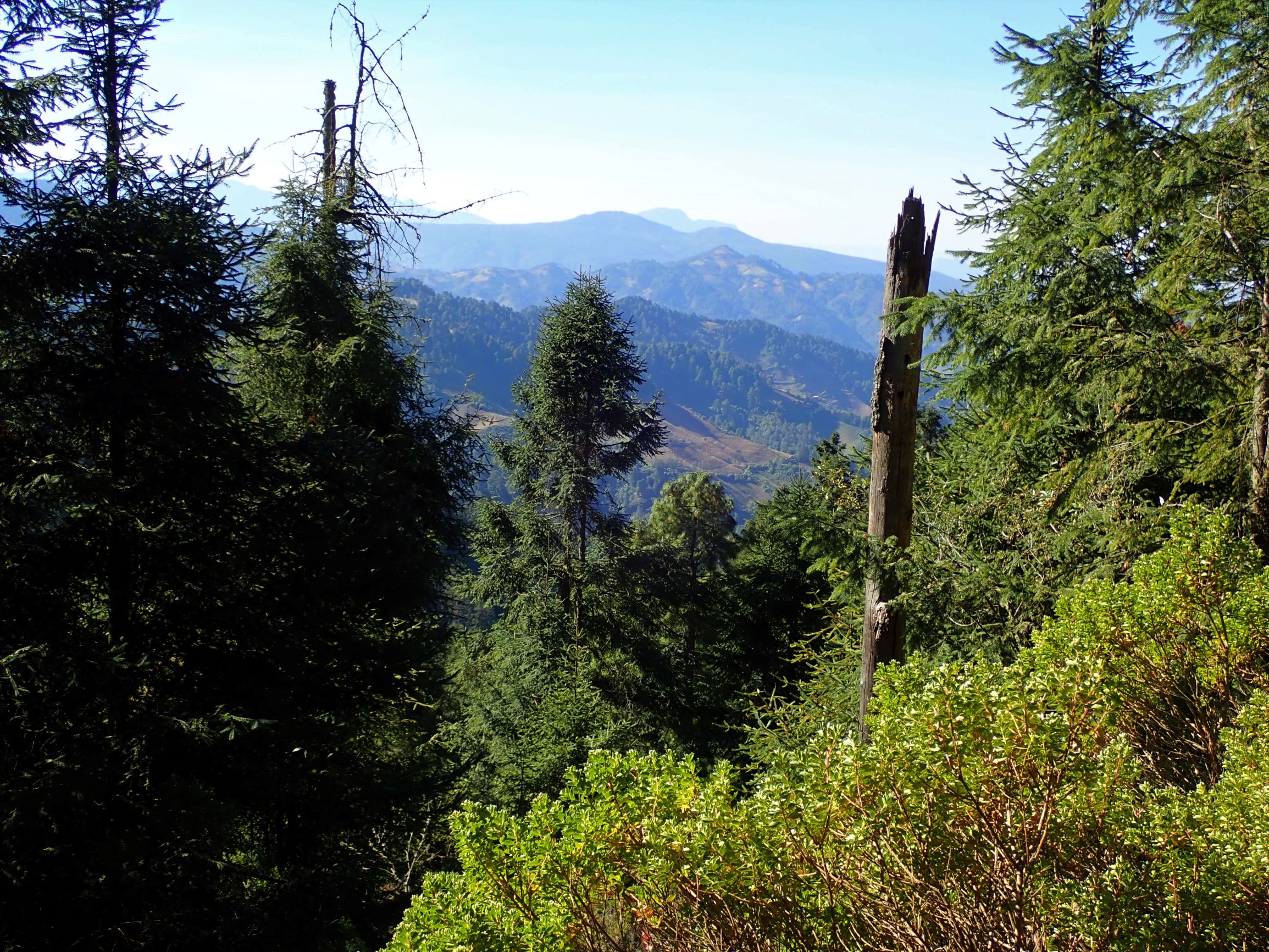
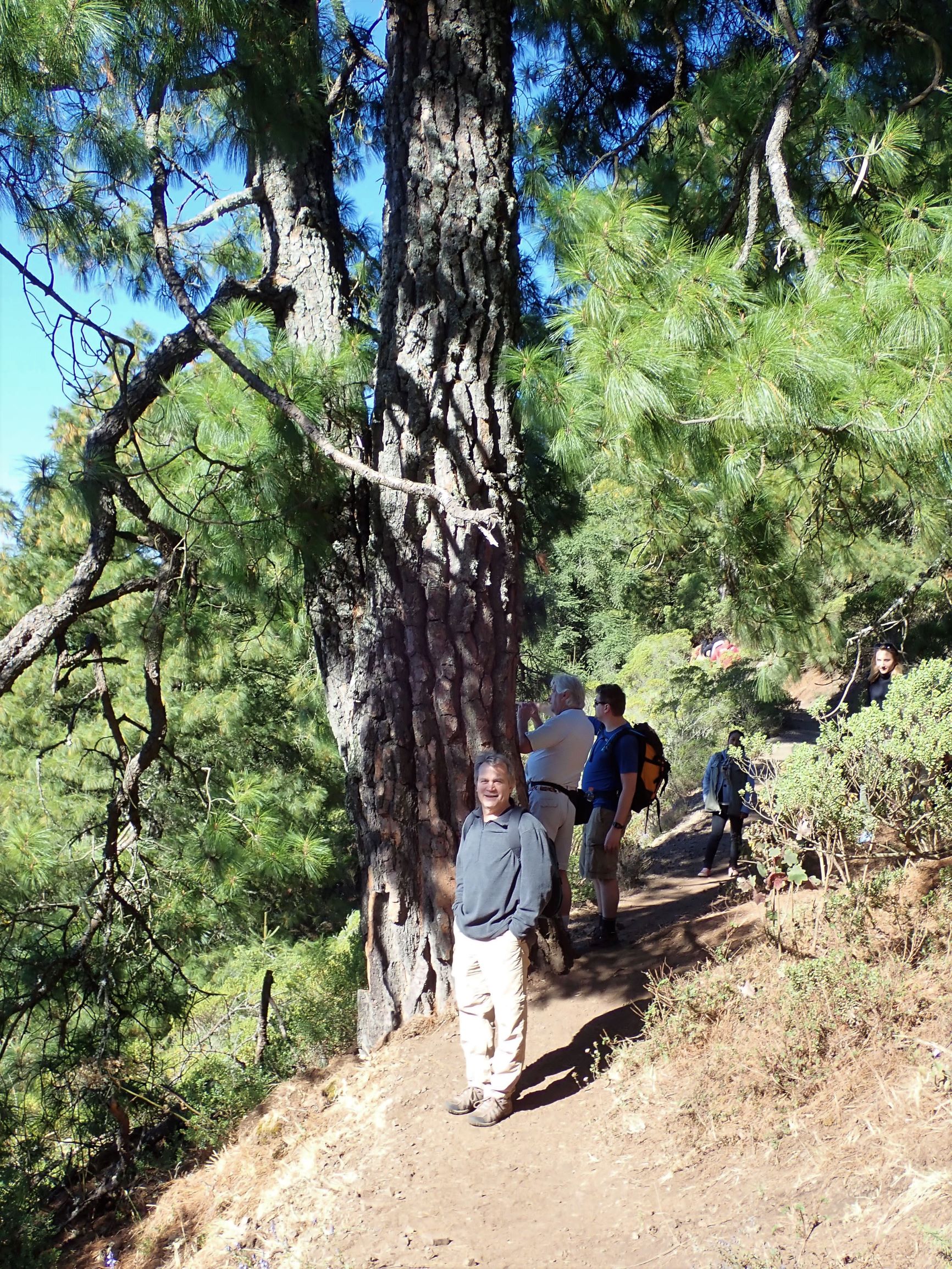
As we neared the butterfly colony, we began to see more and more butterflies in fields feeding on wildflowers. At last, we entered the section of the oyamel forest where the butterflies were congregating. At first glance, it appeared as though the trees branches were drooping under the weight of multiple wasp nests. But of course, these were not wasp nests at all, but clumps of thousands of butterflies.
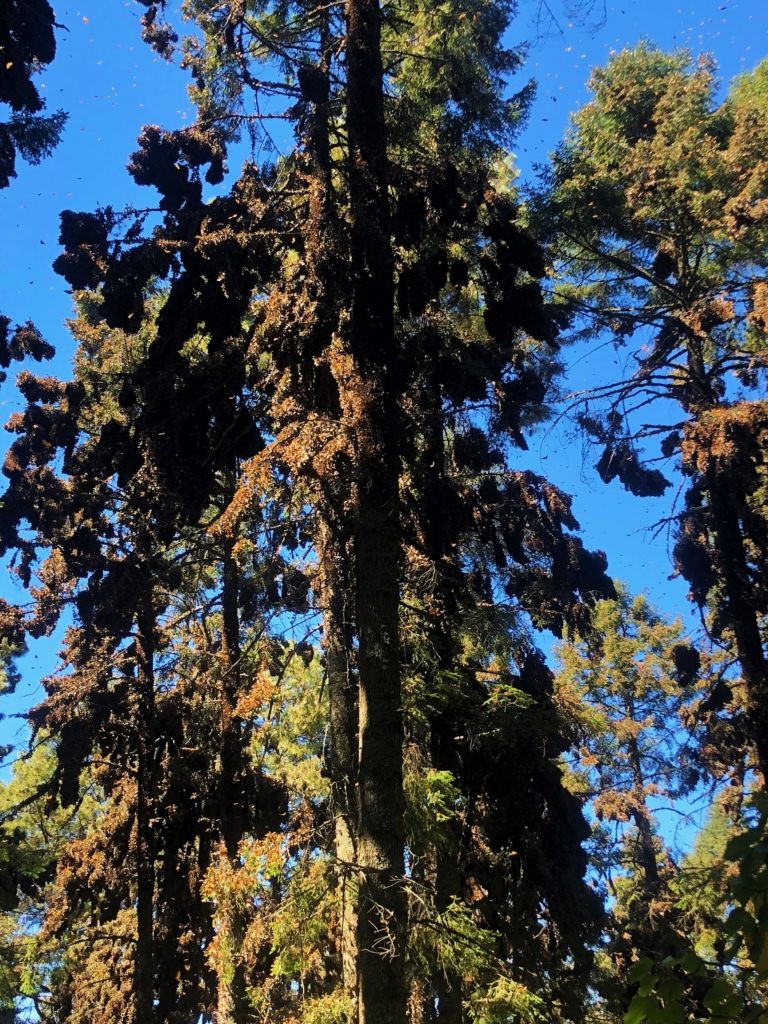
The Monarchs huddle tightly together to keep warm during the cold night, remaining dormant until the sun warms them up around noon. As the sun heats the cluster, it suddenly breaks apart, with the butterflies bursting apart like a fireworks display. Scores of Monarchs flutter to lower tree branches or to the ground, to spread their wings and bask in the sunlight until they become warm enough to fly.
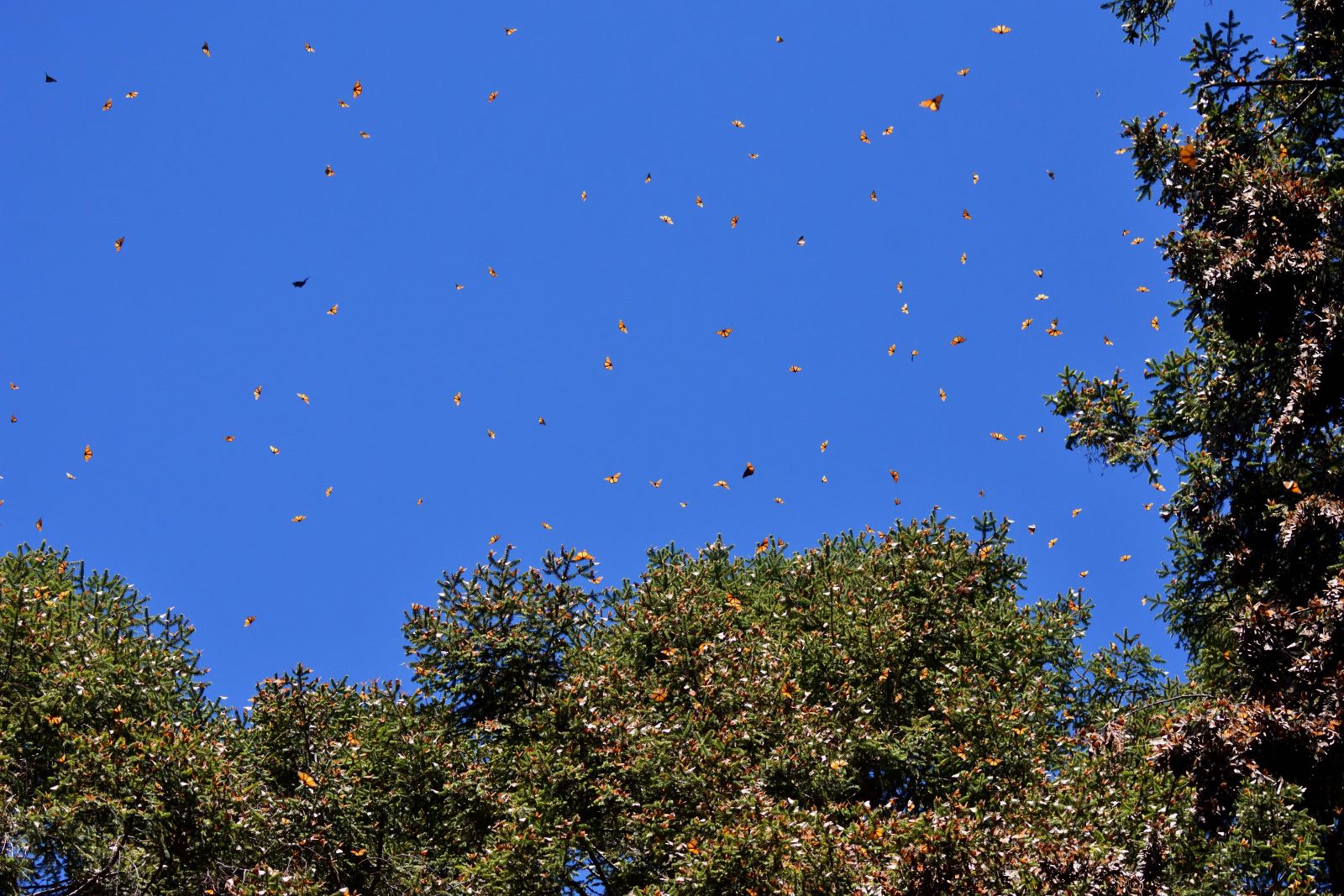
Noise is discouraged in the butterfly reserves, and we spent several hours in a quiet hush, in awe as we observed the incredible phenomenon taking place all around us as butterflies lingered on tree branches, sailed through the air, and swarmed over flowers. Local guides were stationed along the paths to answer questions and make sure people don’t try to touch the butterflies.

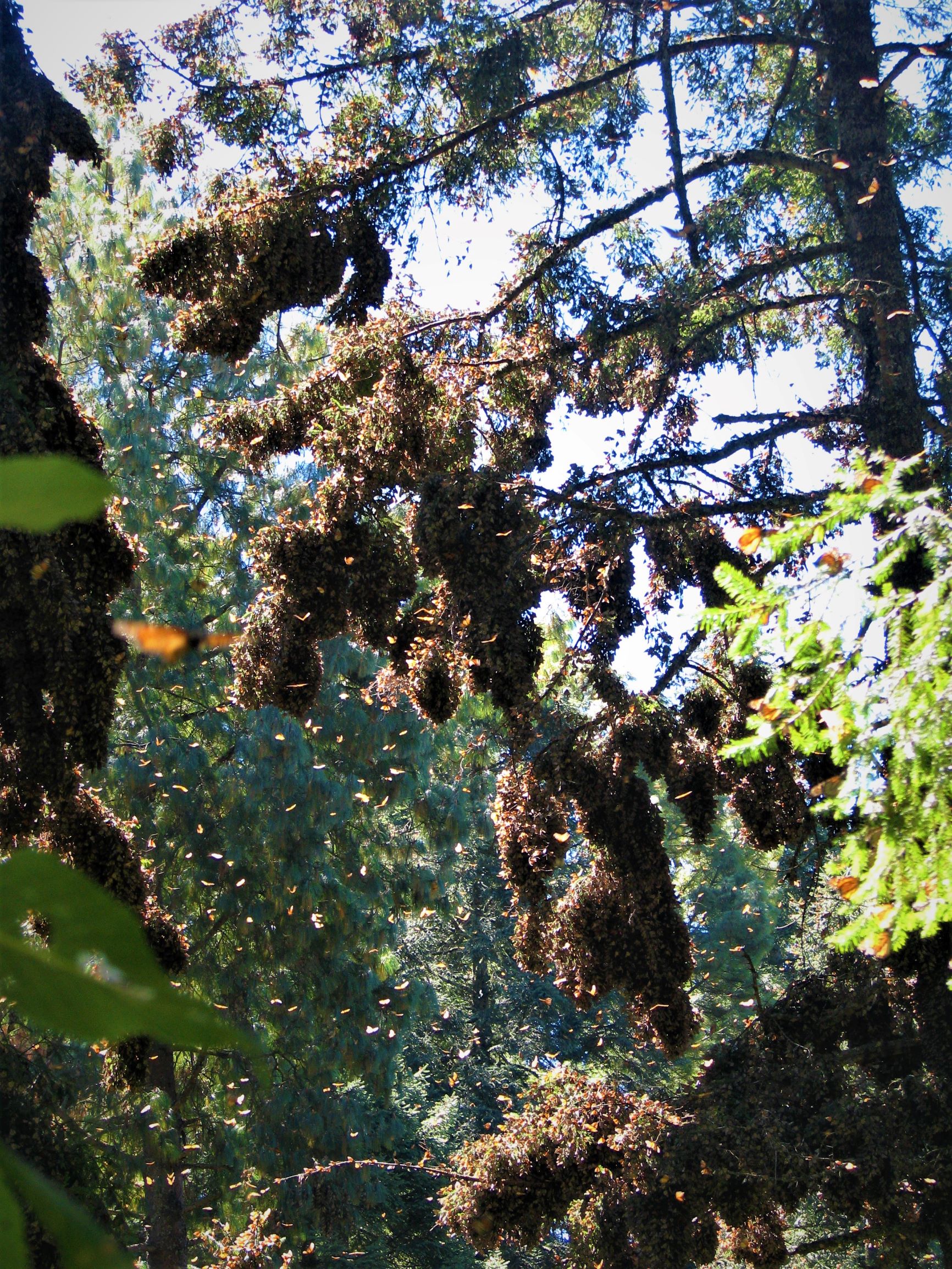
February turned out to be a great time to visit the butterfly reserves. December and January are colder, so the butterflies are less active. February warms up a bit, and the Monarchs fly about in search of a mate before starting their journey north.
Mating pairs were everywhere, and we had to take care not to step on them when they were on the ground. David was treated to a close up view of the process, as one amorous pair decided to do the deed right on the leg of his pants.
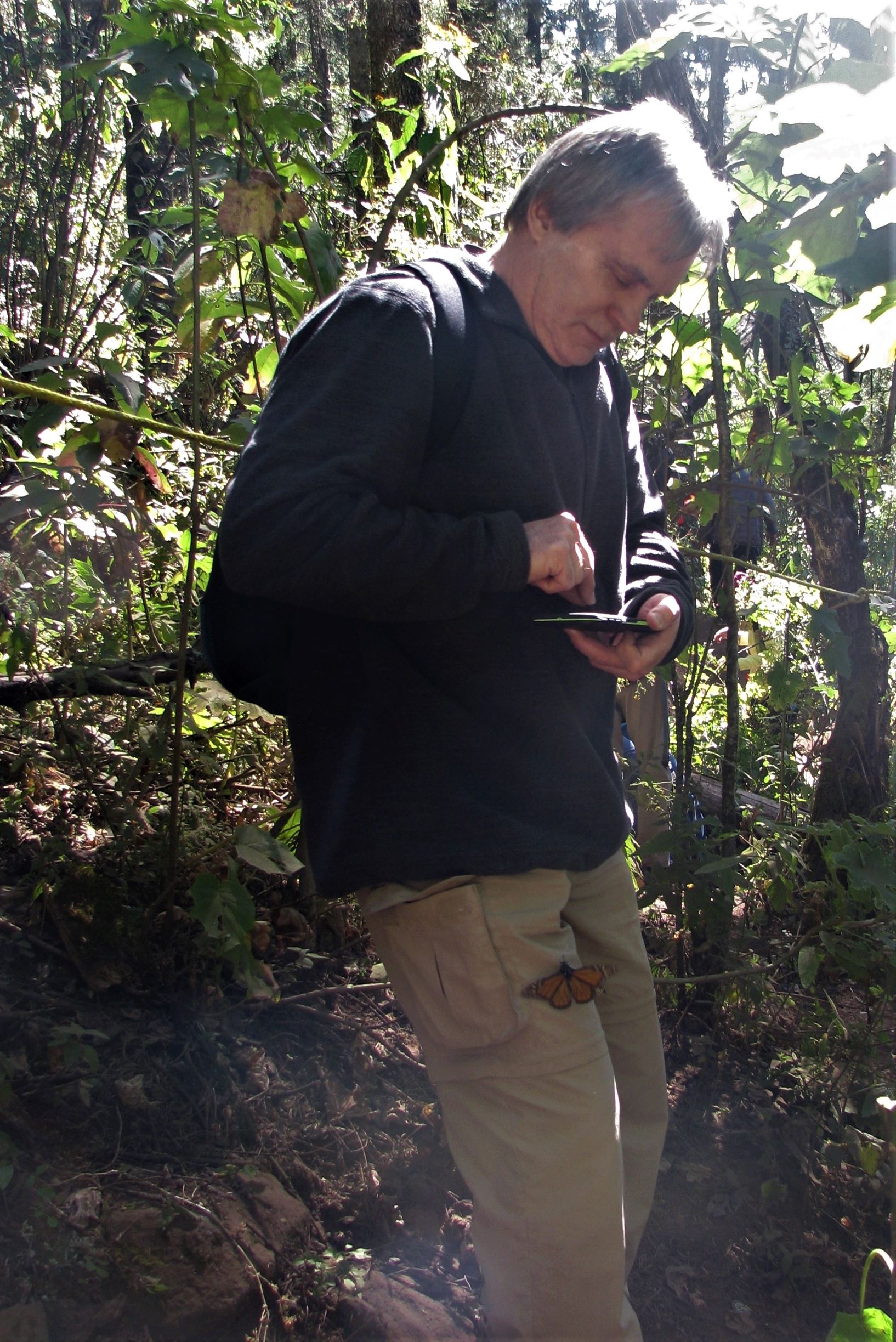
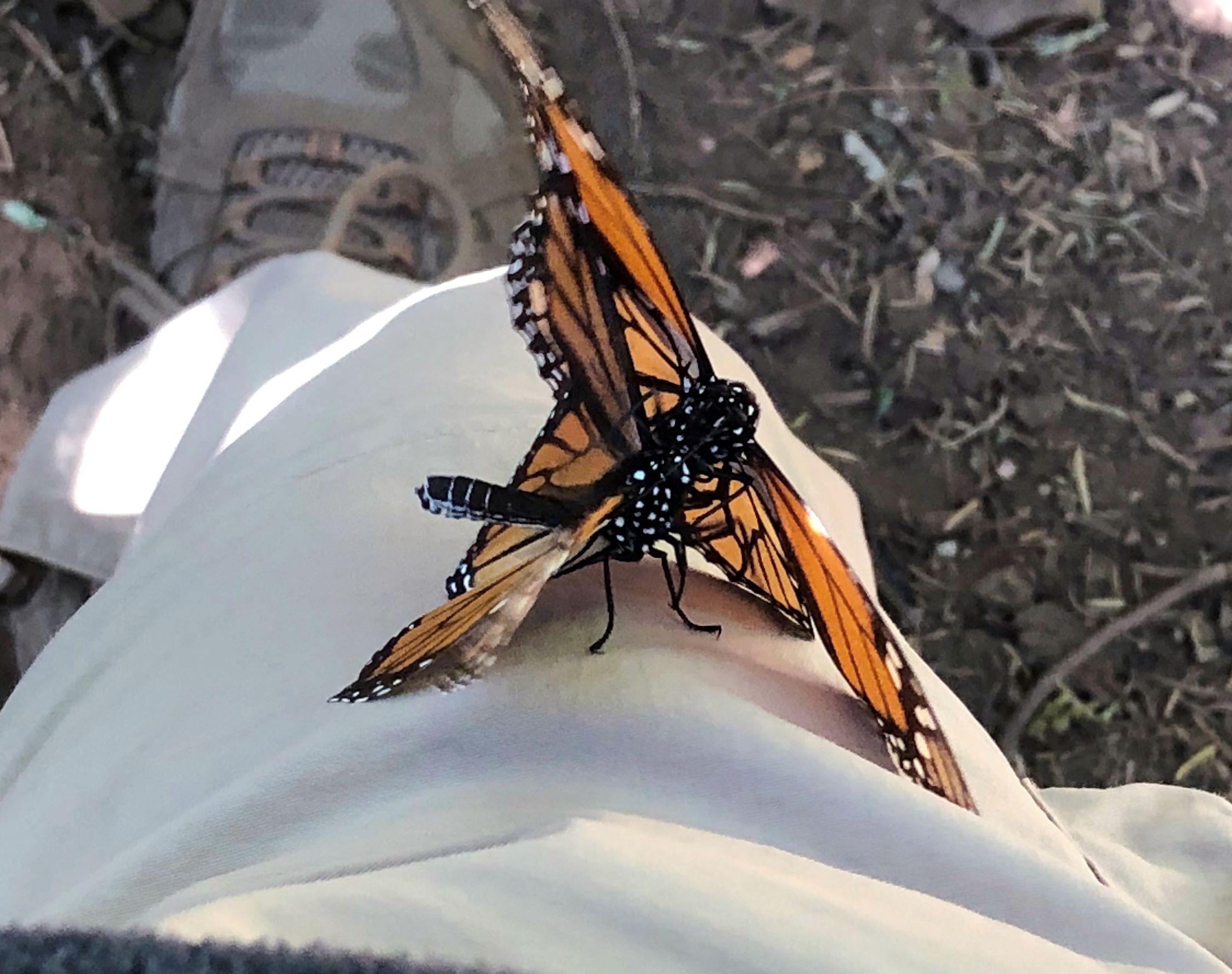
El Rosario Reserve
On the fourth morning of our tour, the bus headed to El Rosario Reserve to view another Monarch colony. We realized we were in for a special day when we spotted Monarchs hitching a ride on air currents overhead, still a couple of miles from their roosting site.
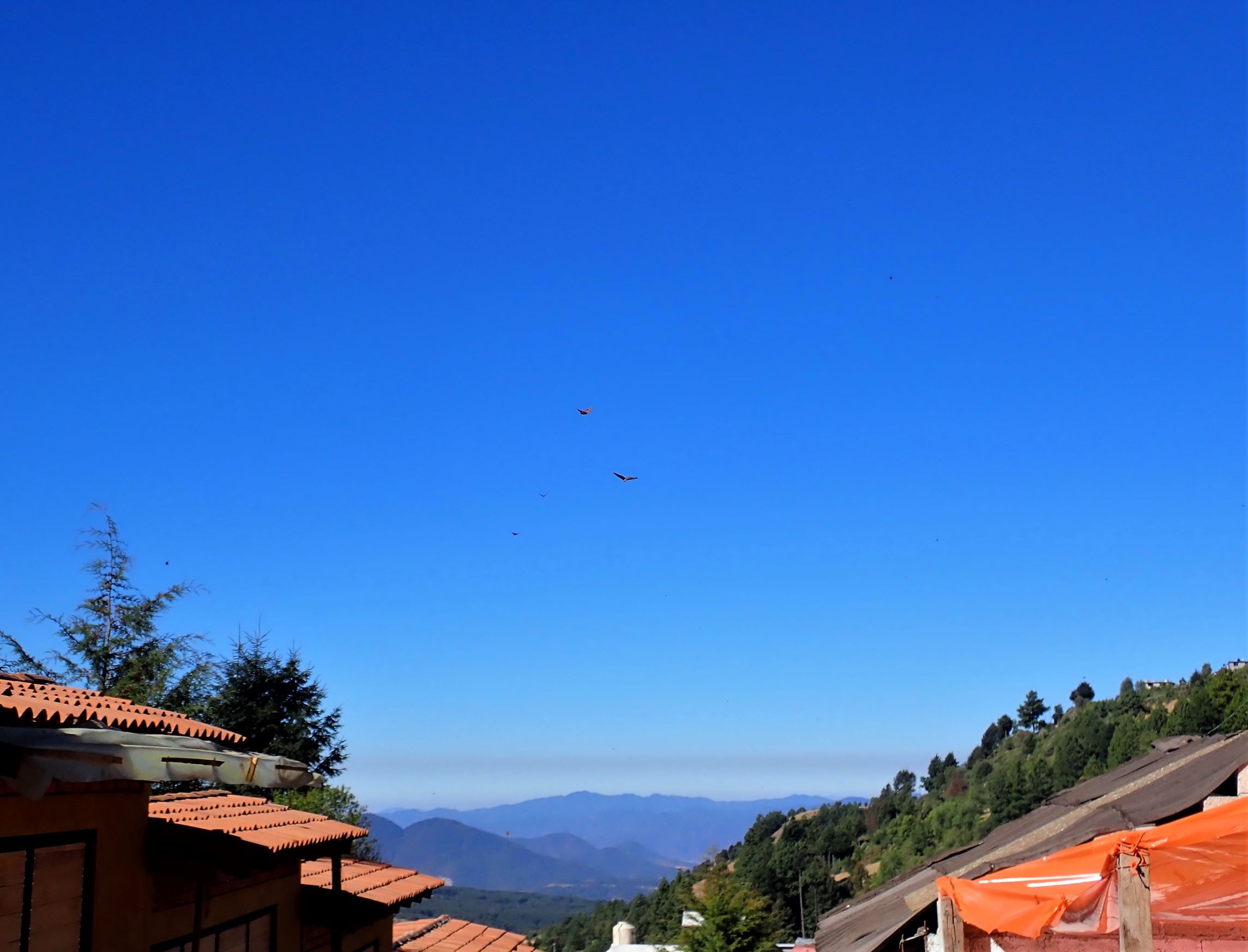
The El Rosario sanctuary is the largest sanctuary as well as the most visited within the Monarch Butterfly Biosphere Reserve. We were so glad that our guide saved the best for last!
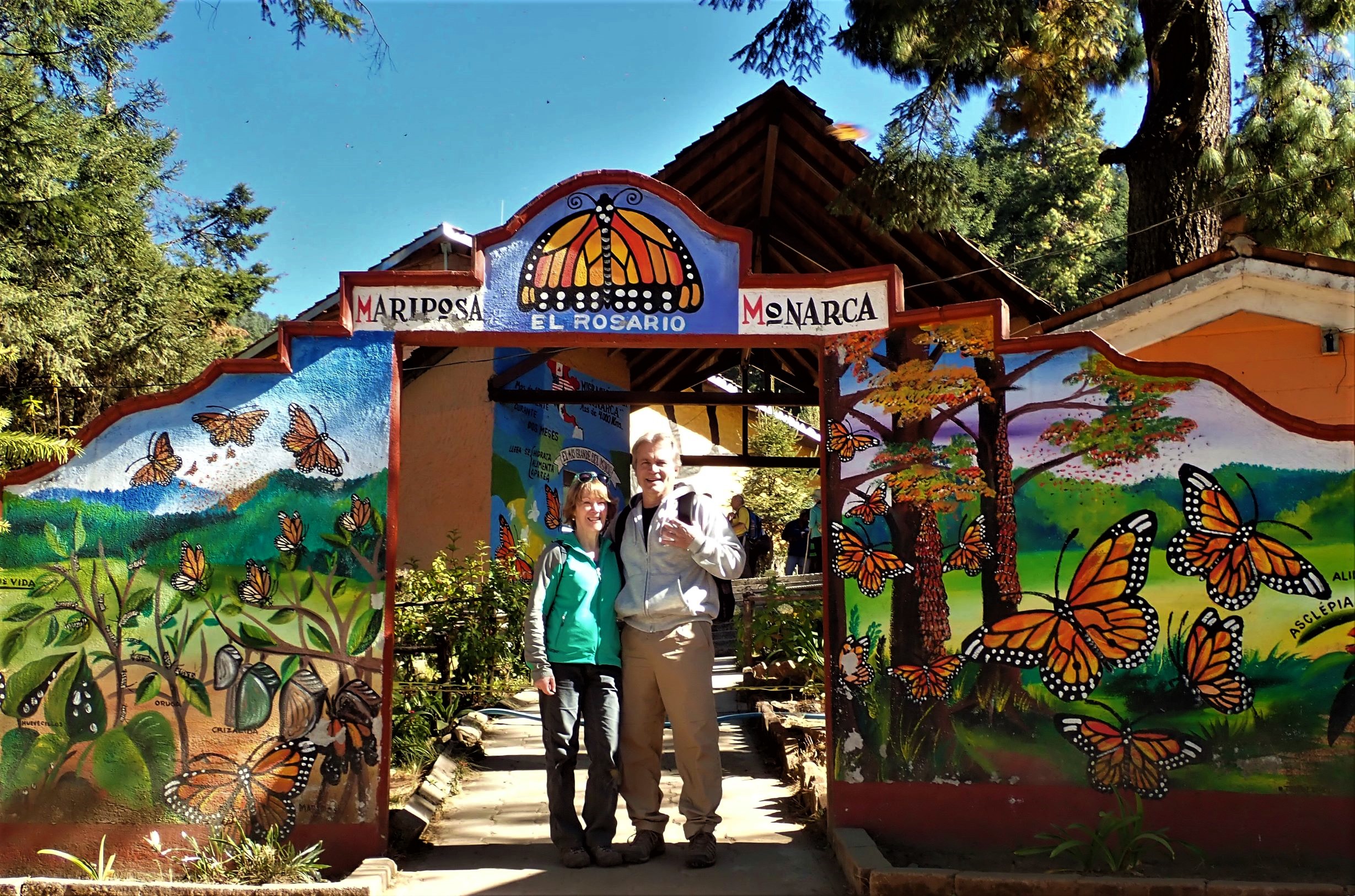
Once again, the terrain was steep. This time David and I joined other members of our group and rode in on horseback. Guides on foot walked along to lead the horses. My caballero (Spanish for cowboy) was quite sociable and was happy to give me an impromptu Spanish lesson along the way. The number of butterflies fluttering around began to increase exponentially, heightening our excitement.
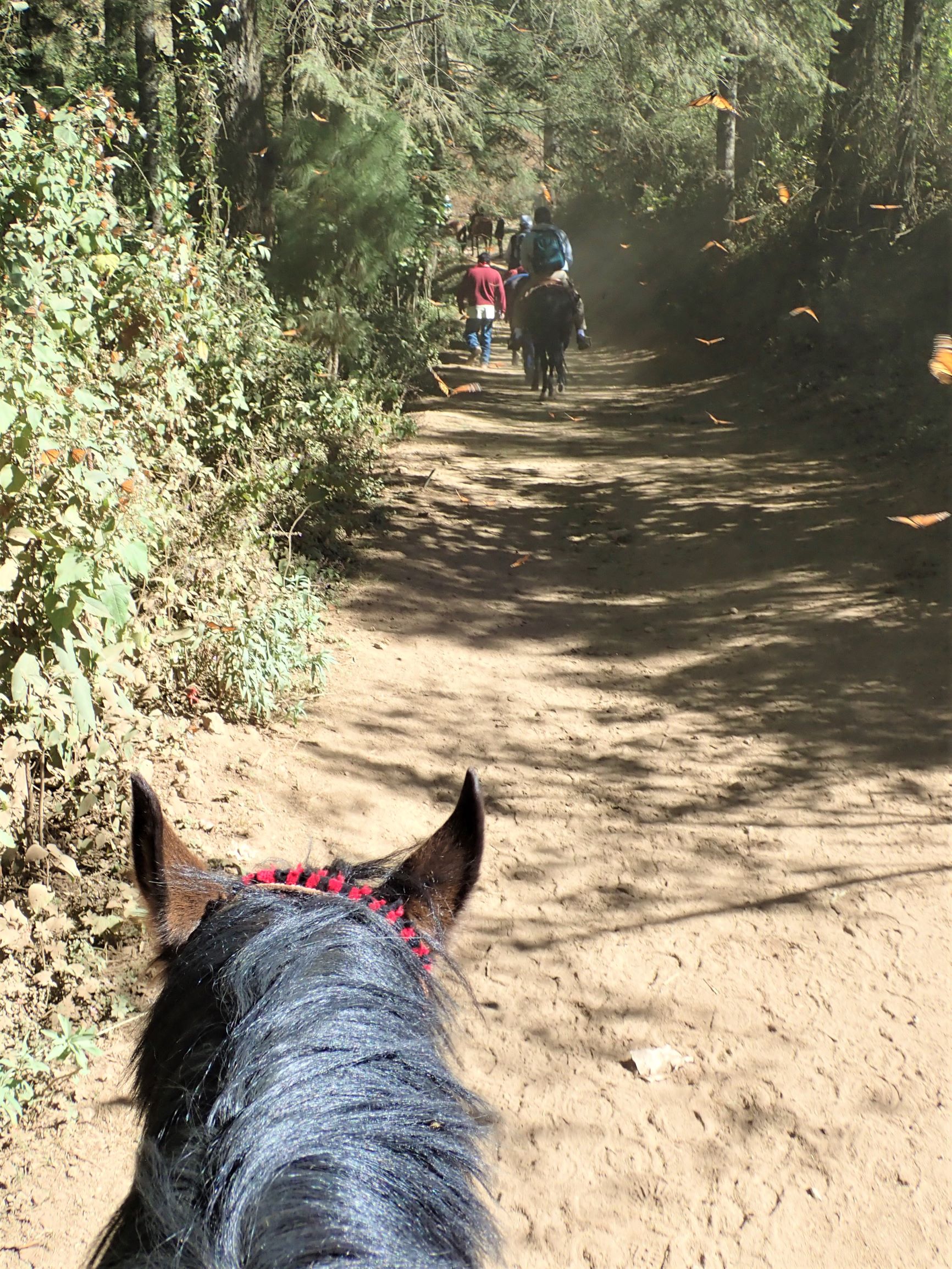
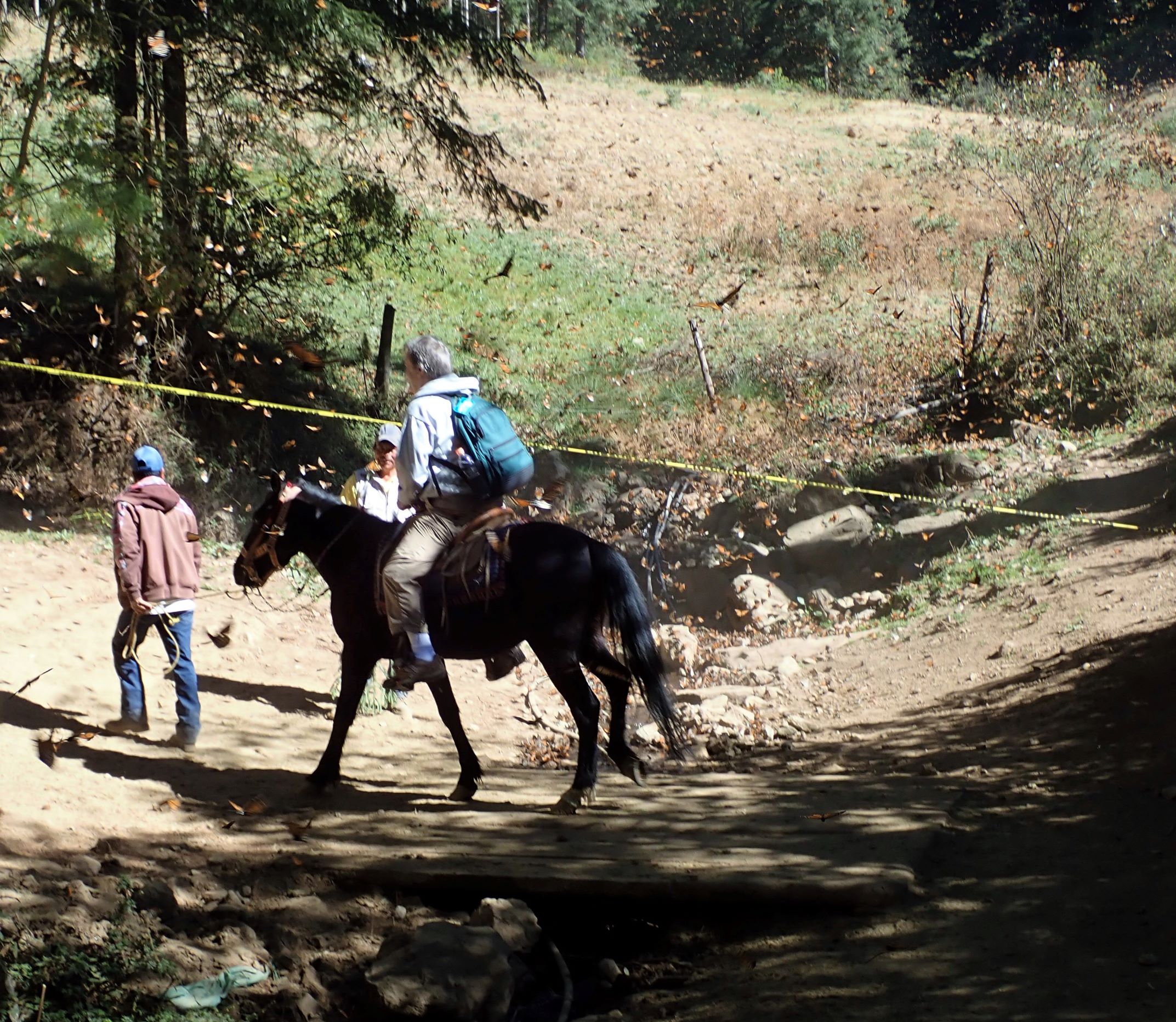
When we disembarked, it took a moment for us to realize what we were actually seeing. Every single pine branch of every single tree was drooping under the weight of the monarchs that were clustered there: as many as 10,000 butterflies packed onto a single tree. We waited a bit as the as the temperature warmed up, and then Monarchs all around us exploded in a brilliant burst of orange and black. The sheer number of Monarchs swirling around was absolutely mind-boggling.
The activity around us felt almost frantic as the butterflies took off in search of water, in search of pollen, and in search of a mate. They packed together to sip from small streams trickling down the mountain, and formed flocks being carried by air currents. They landed on our bodies and in our hair. We tread gingerly to avoid stepping on them. We could actually hear the thrum of millions of beating wings.
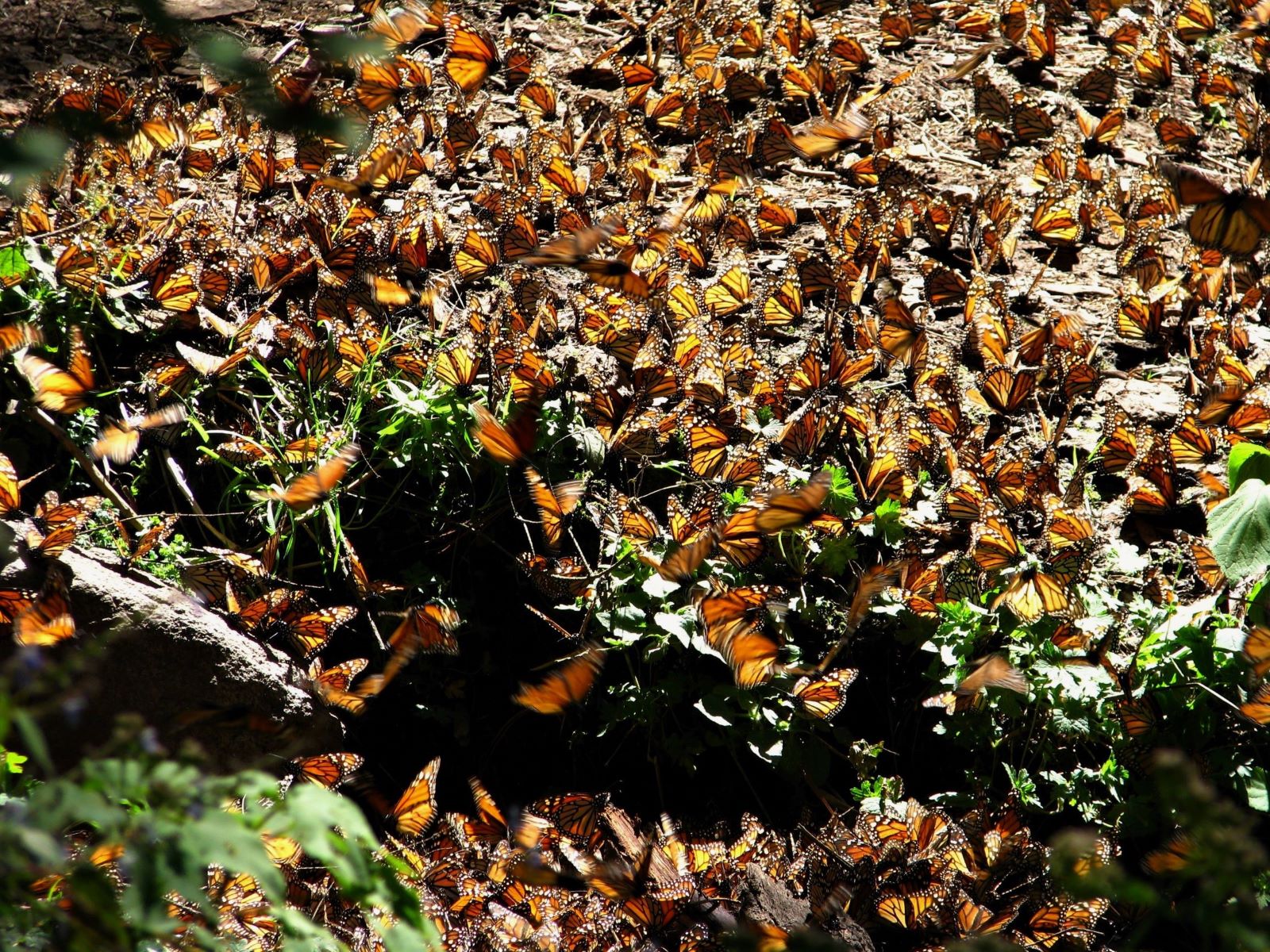
Once again, local guides were present to make sure that visitors respect the butterflies and their habit.
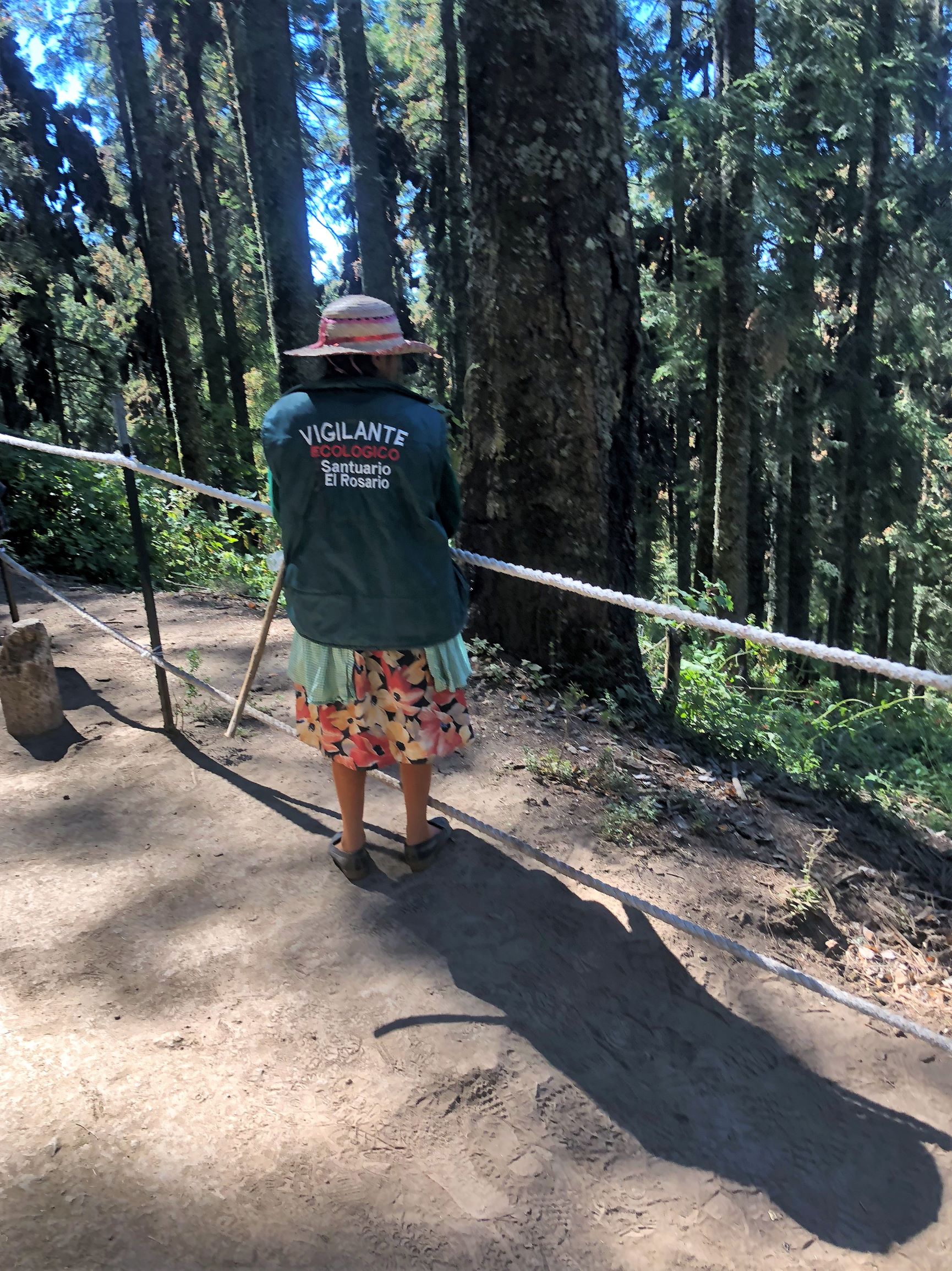
David and I hiked back out, mostly in silence, in awe as we reflected on the amazing phenomenon we had just witnessed. As we neared the parking lot, the walkway was lined with booths displaying hand made crafts. I ended up purchasing a tee shirt, mostly because I felt it was important to support the local residents whose efforts are critical in protecting the Monarchs’ ancestral wintering grounds. Food was also being prepped over cookstoves and available for purchase.
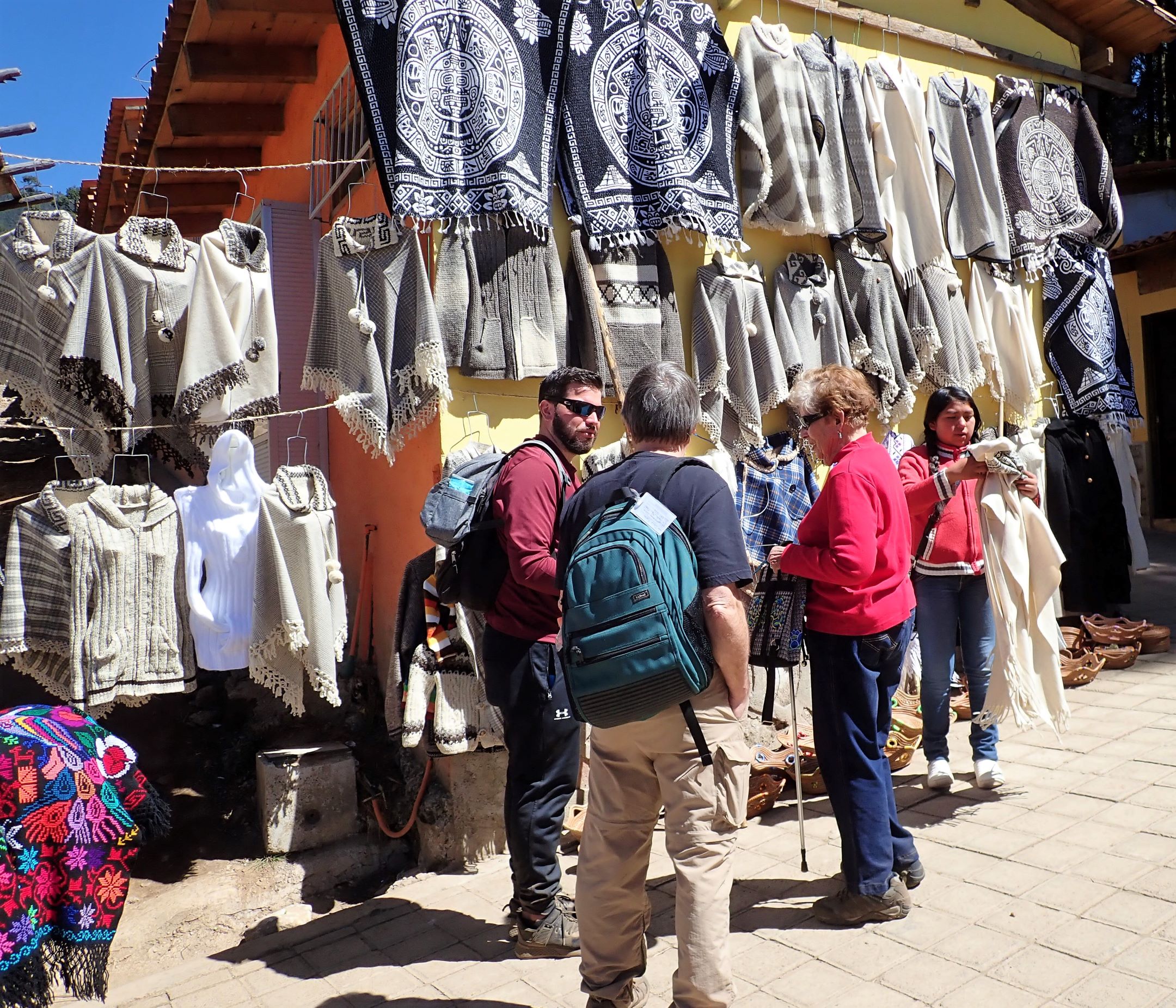
We saw far, far more Monarchs at El Rosario than we did at Sierra Chincua. We were so grateful that our guides decided to save El Rosario as our finale! It was simply overwhelming to be in the midst of countless millions of butterflies: The sheer magnitude of Monarchs was literally impossible to comprehend.
Teotihuacán Pyramids
Our few days with the butterflies passed by all too quickly, and it seemed that in no time at all we were on the bus heading back to Mexico City. We stopped at the UNESCO World Heritage Site of Teotihuacán along the way. Teotihuacán was the most powerful city in this region of Mexico around 400 AD. The name Teotiuacán means “the place where the gods were created.” Two ancient pyramids are connected by a 1.5 mile road known as The Avenue of the Dead
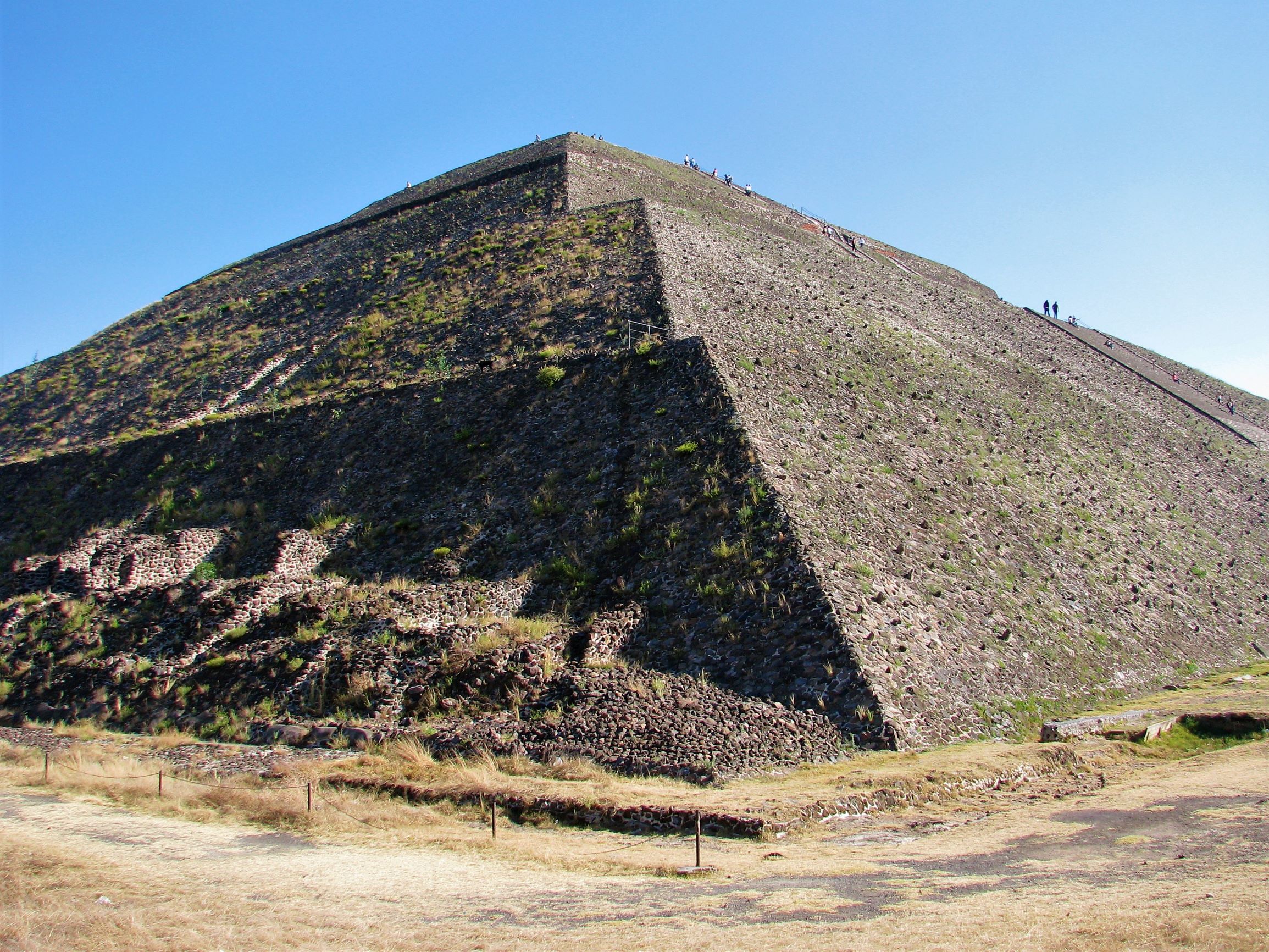
Built sometime around the year 100 AD, the Pyramid of the Sun rises 216 feet into the sky. It is the third largest pyramid in the world, after the Great Pyramid of Choluah in Puebla, Mexico and the Great Pyramid of Giza in Egypt. Unlike the two tallest pyramids, however, you can actually climb to the top of this one! Which, of course, we did.

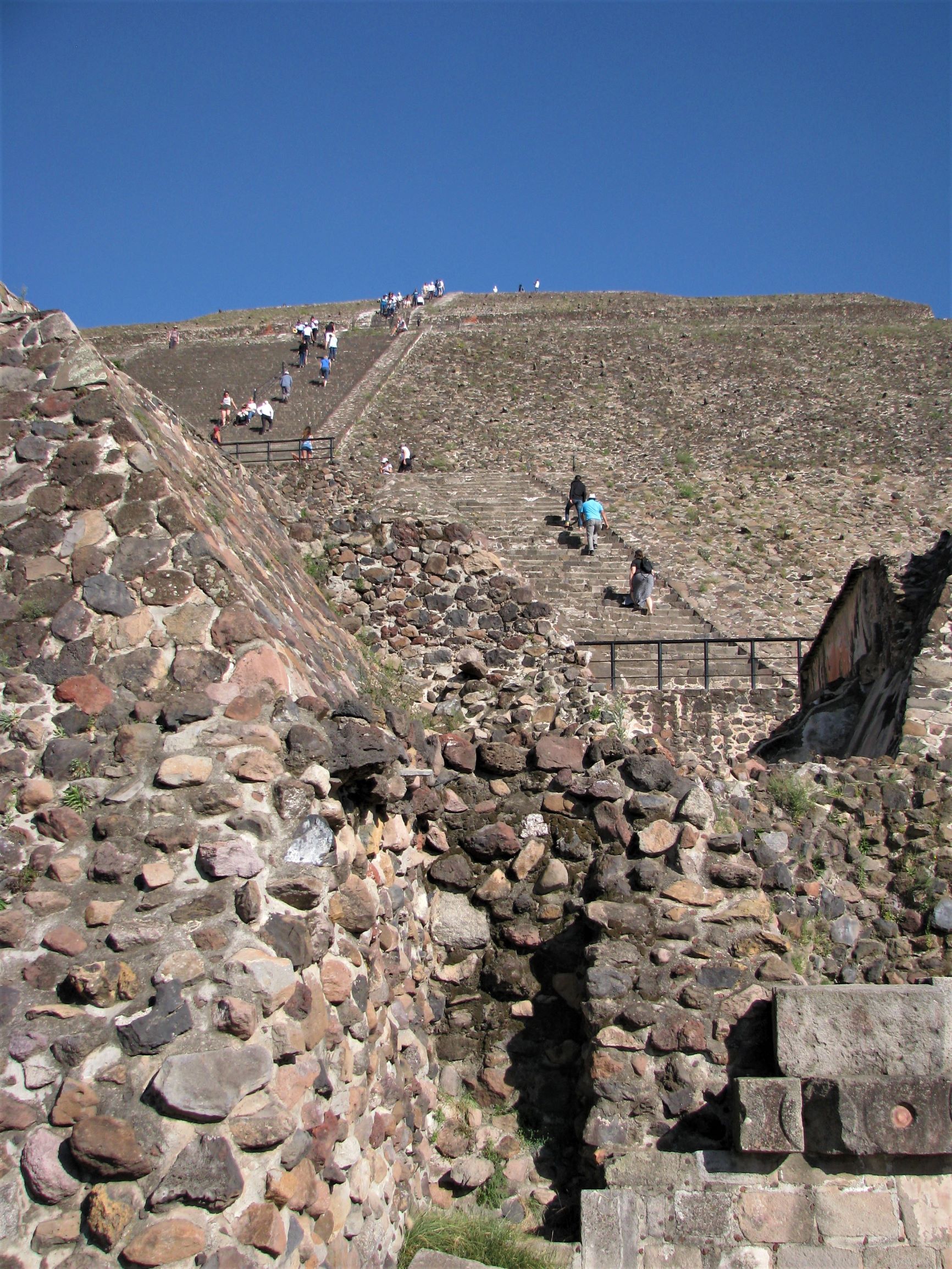
We climbed up 248 stair steps, which were uneven at times. There was quite a breeze blowing at that elevation, far more than what we had noticed on the ground. We were treated to an incredible panoramic view of the ancient city, arranged in a grid type layout. There were hundreds of small buildings and temples, culminating in the Pyramid of the Moon at the opposite end of The Avenue of the Dead.
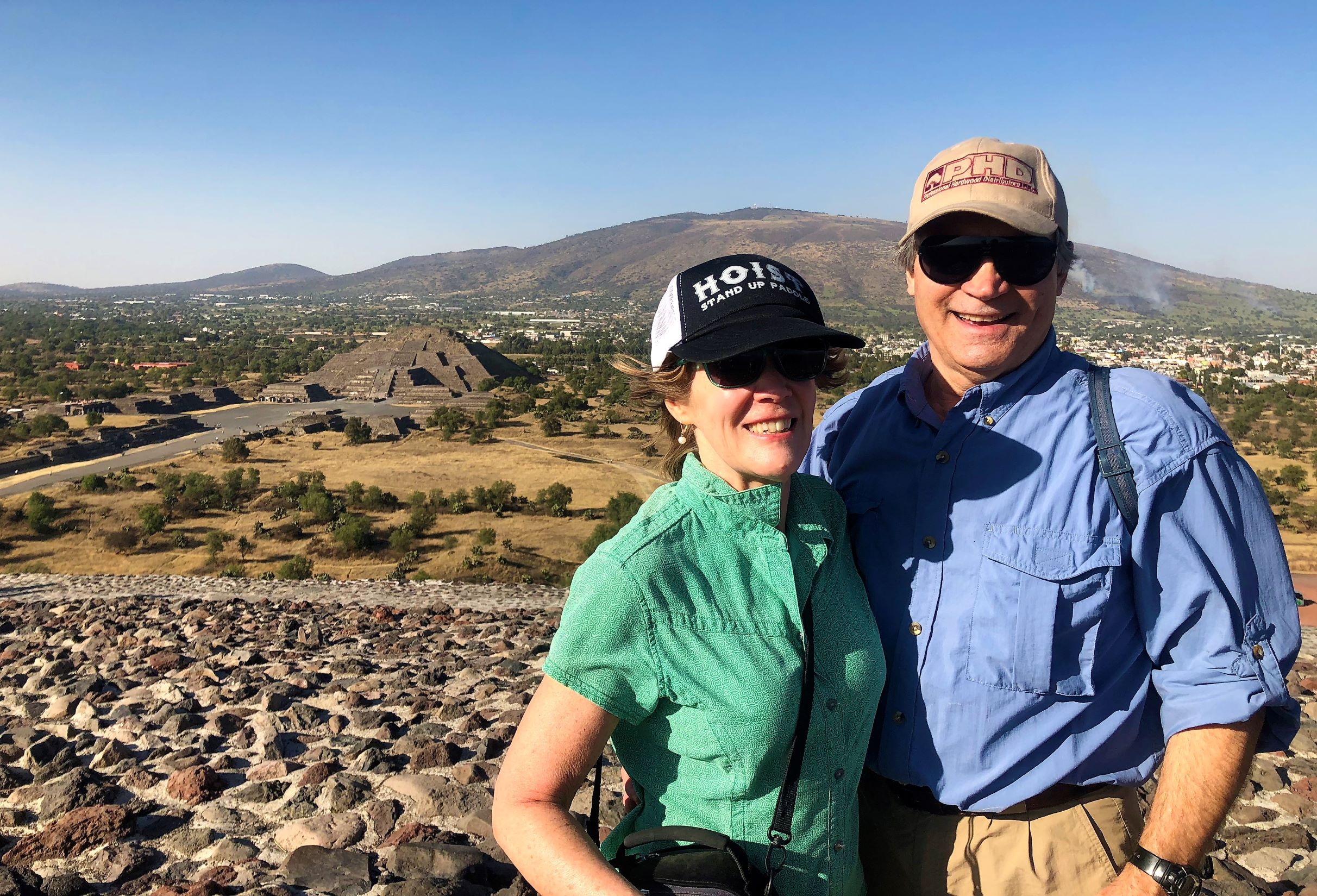
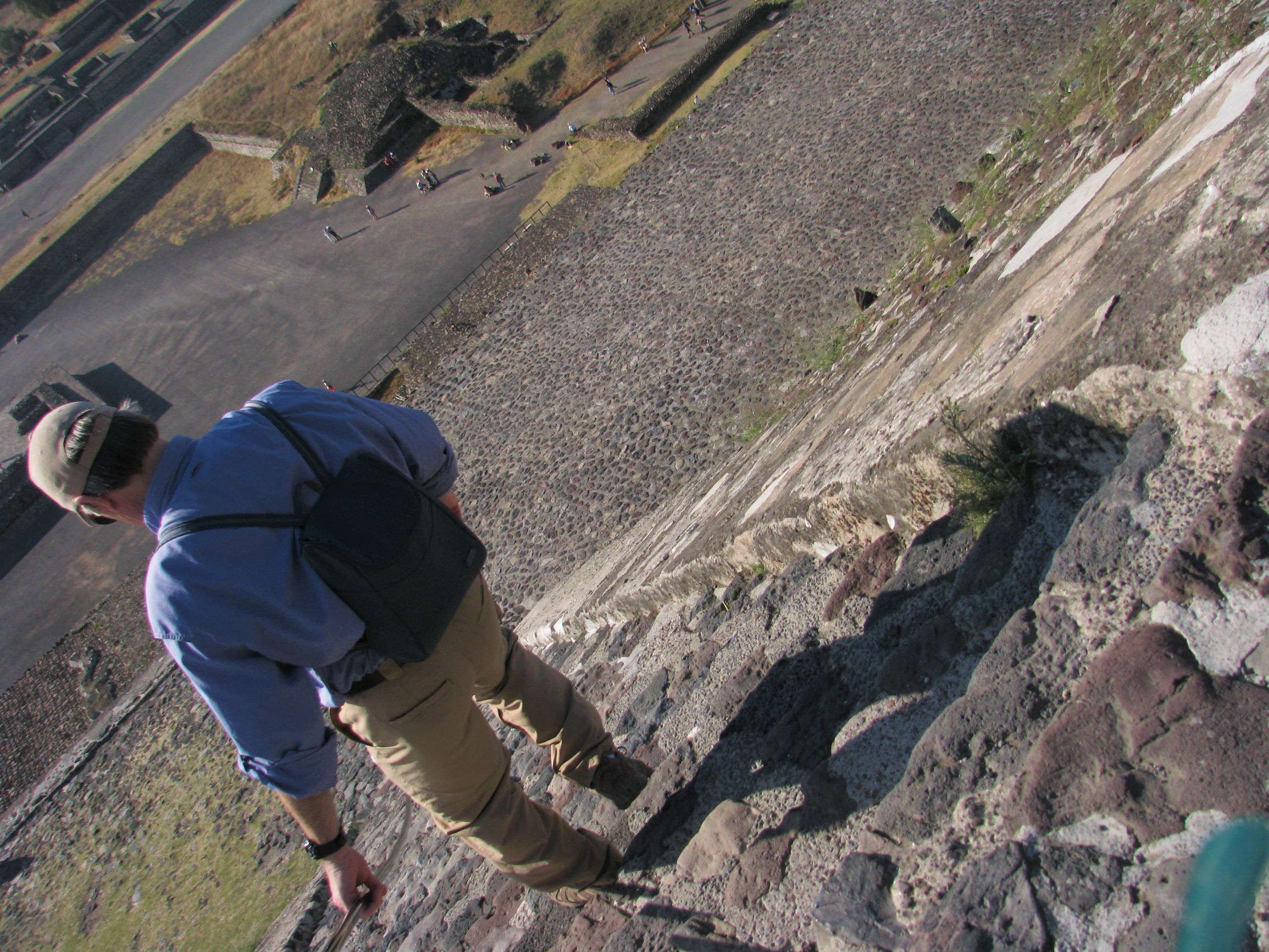
It’s possible to tour inside some of these ancient buildings, although our tour schedule did not allow time for this. We thoroughly enjoyed the opportunity to scale the pyramid and walk a bit in the desert sunshine.
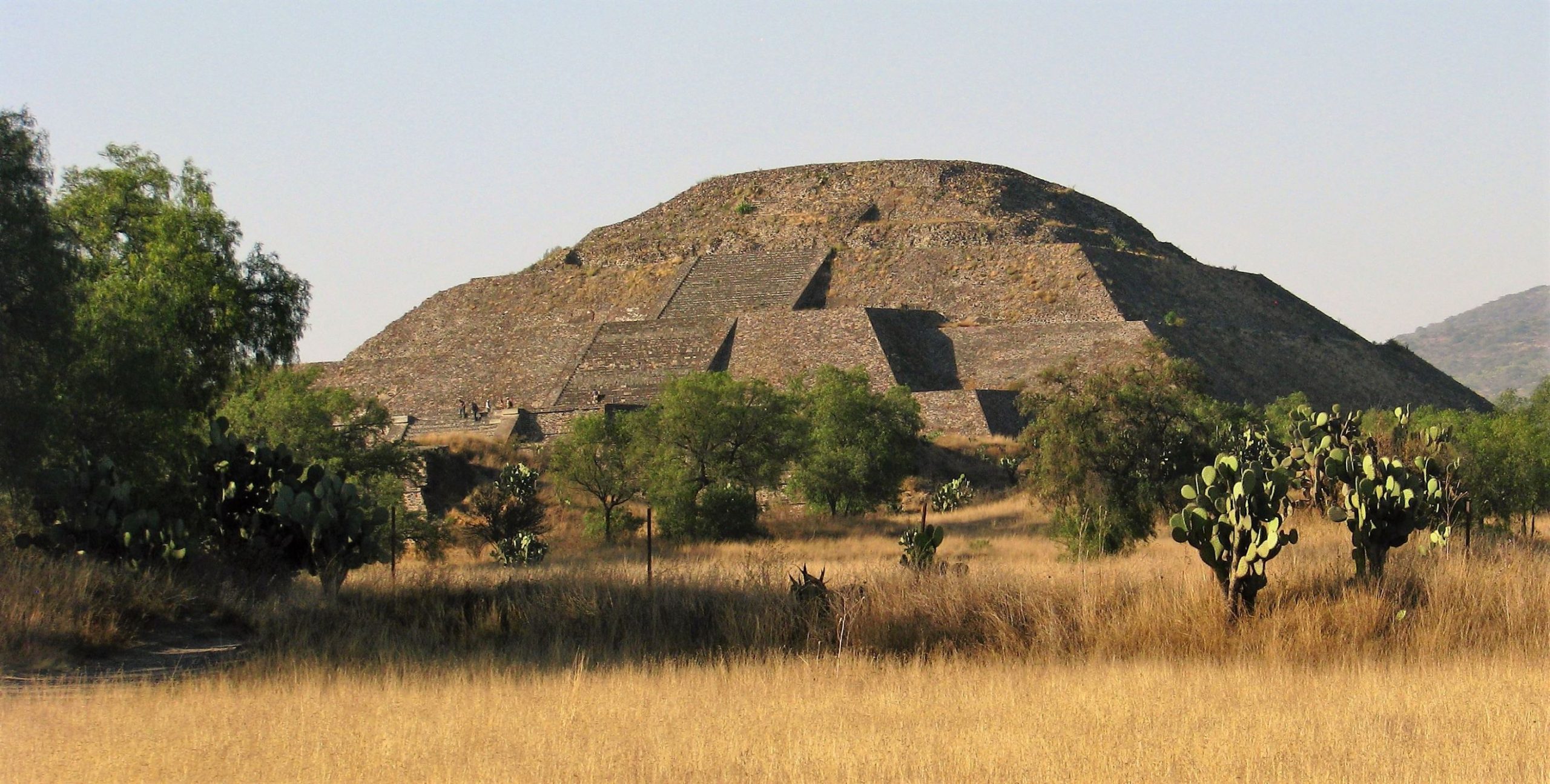
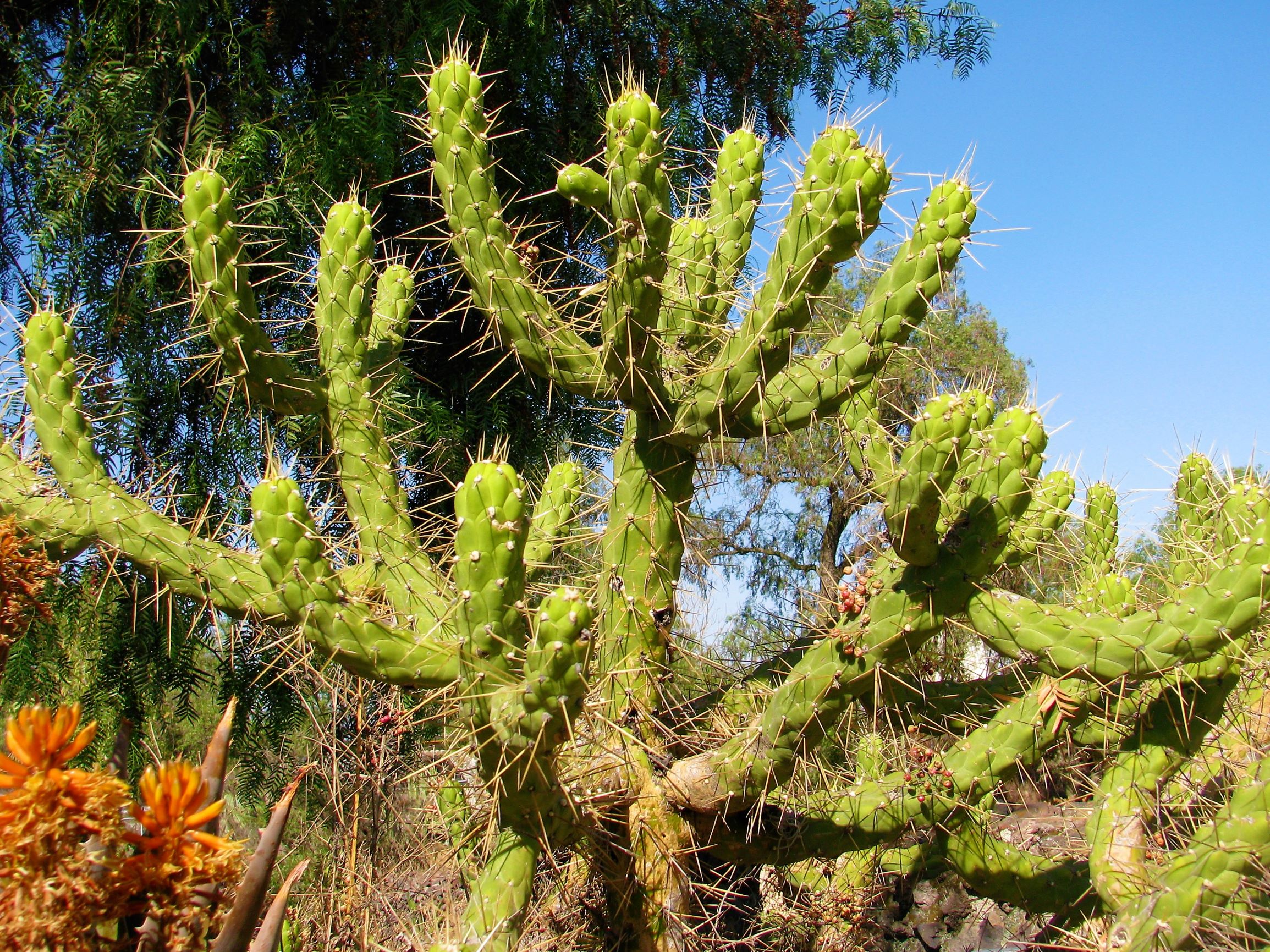
Help Save Monarch Butterflies
Monarch populations have been declining in recent years, due to many factors including climate change, pesticides, deforestation in Mexico and loss of habitat in the United States. Interested in helping these amazing creatures survive? Plant native milkweed in your yard! Female monarchs lay their eggs on milkweed plants, as milkweed is the only food source for Monarch caterpillars from the time they hatch until they transform into butterflies. Not sure which type of milkweed is native to your area? Go to the Save Our Monarchs Foundation website to order seed packets!
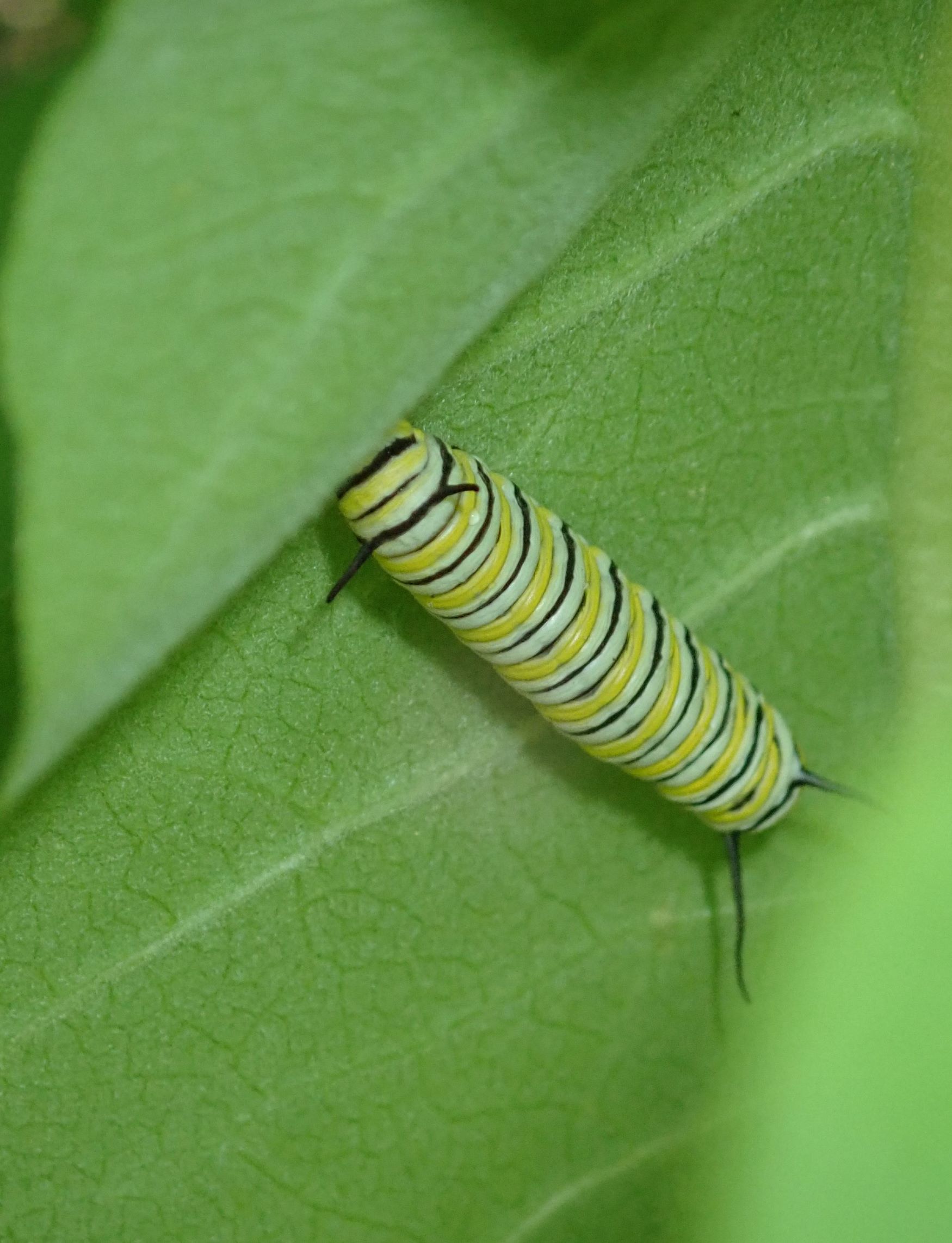
Grow nectar-filled flowers in your garden and cut back on pesticides. You can also visit the National Wildlife Federation’s website to learn how to create a garden for wildlife.
The World Wildlife Fund works with the Mexican government and local communities to protect the Monarch wintering grounds, and to support sustainable projects that provide an economic alternative to people who live in the region. You can help by symbolically adopting a Monarch. Check out WWF’s catalog of Species Adoptions to provide support for Monarchs and other endangered species.

You can track the migration of the Monarchs, as well as migratory birds, at Journey North. Citizens from Mexico, the United States, and Canada are invited to submit observations in order to help map the Monarch’s journey.
By all means, schedule a trip to the butterfly sanctuaries. Entrance fees and money tourists spend in the area support Monarch preservation and the local people trying to save them. Holbrook Travel continues to offer tours to the Butterfly Reserve. Visit their web site to see about joining a scheduled trip, or planning one of your own. Or check out many of the other eco-friendly tours at Holbrook Travel.
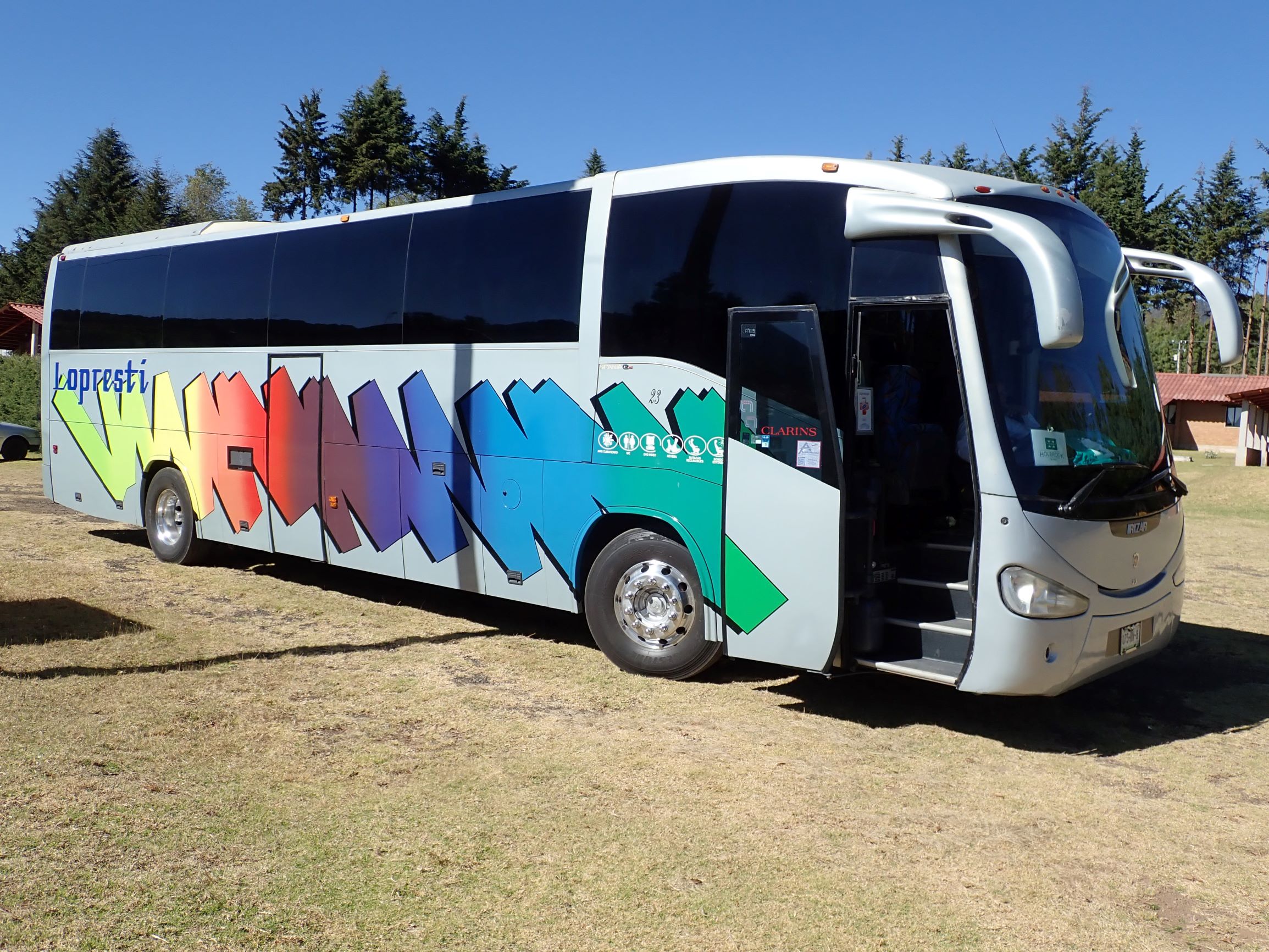
Are you an animal lover, looking for another incredible wildlife adventure? Check out our blog post on the Galapagos Islands!
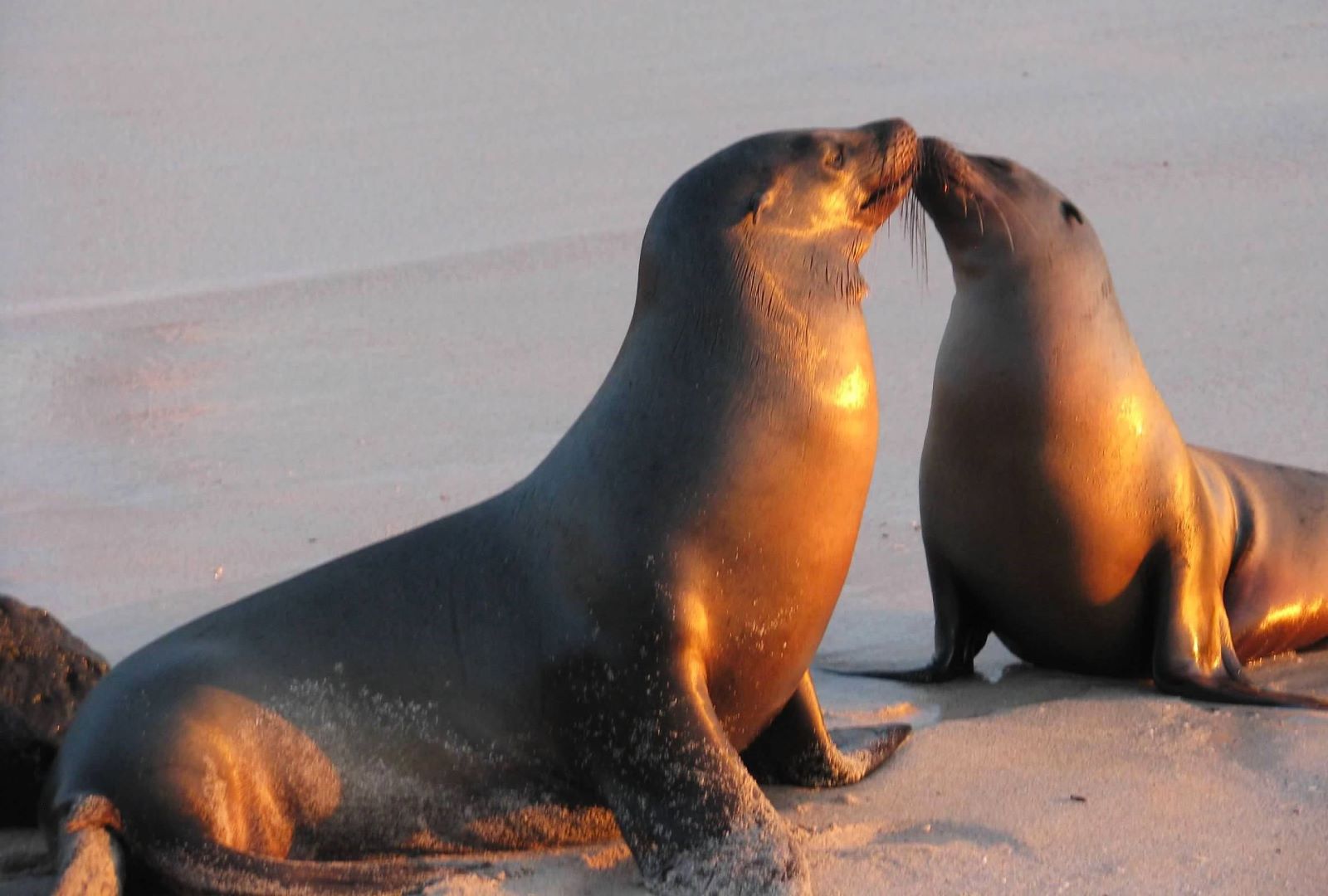
Planning A Trip? Use Our Favorite Resources!
These are sites that I use when booking a trip. If you book through my links, I may earn a commission at no extra cost to you. Thanks for supporting On To New Adventures!
Accommodations: We recommend using booking.com
Flights: We recommend WayAway
Tours And Experiences: We recommend Viator
Best Clothing And Gear: We recommend REI
We love getting to know our travel destinations, and we are always seeking to engage with the local community and its residents. We recently created a guide describing our favorite ways to connect with local people during our travels.
Enter your name and email address below and our free guide will be on its way to your inbox!

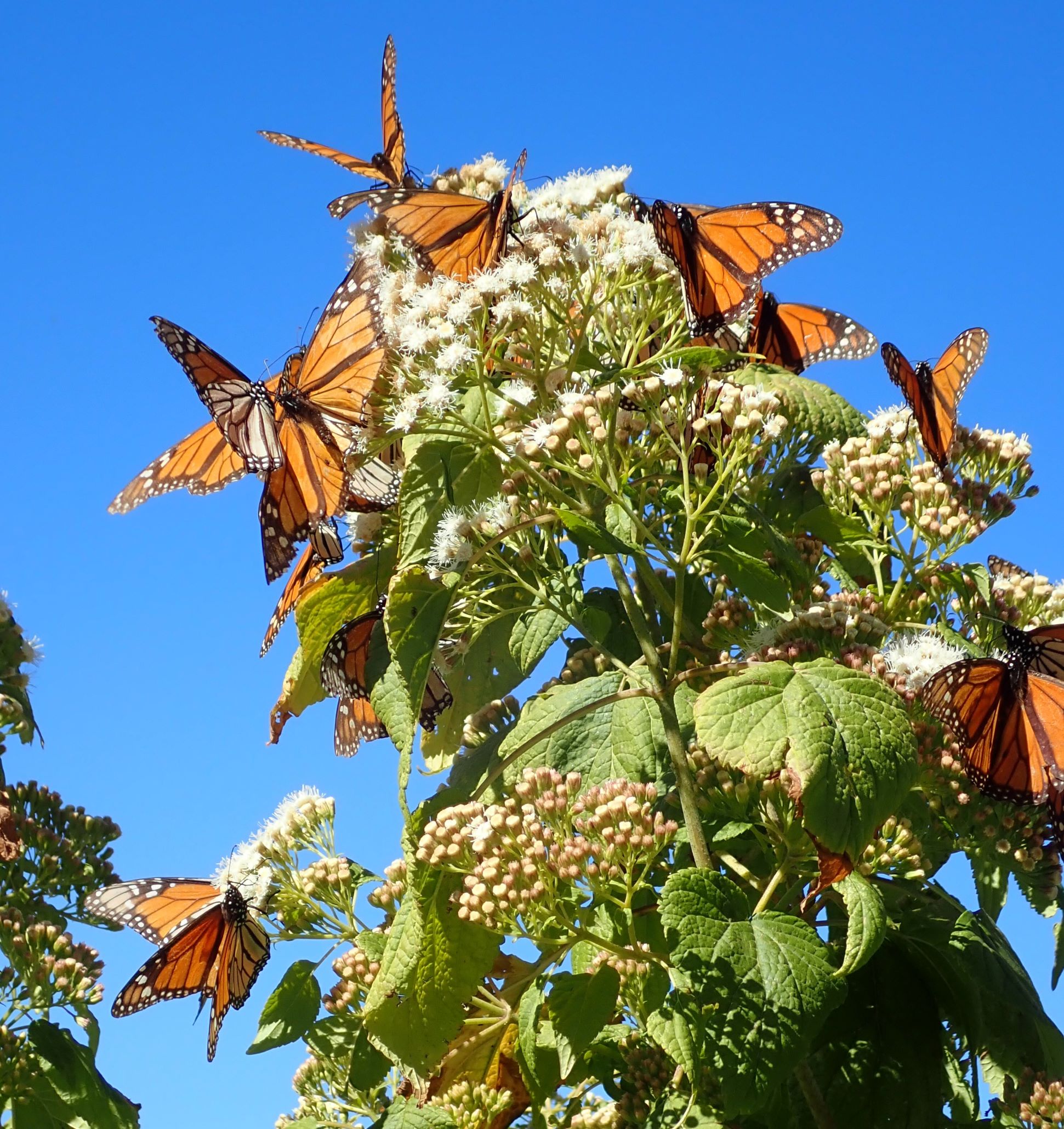

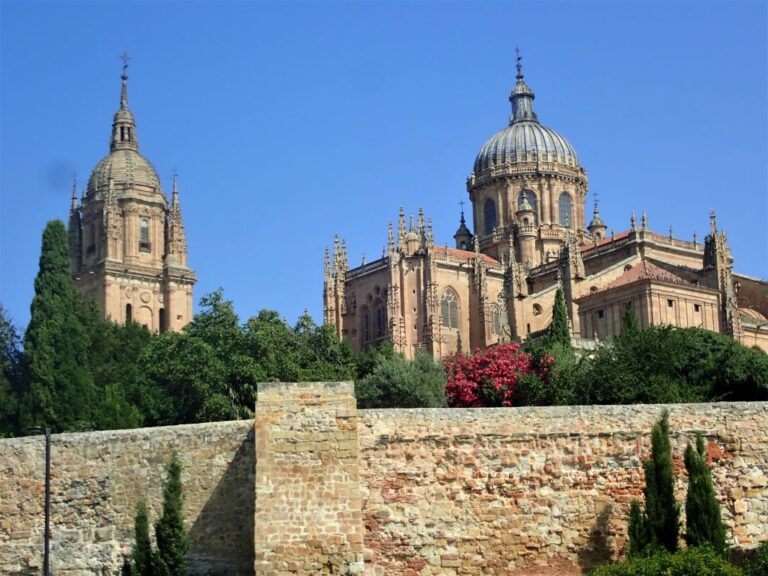
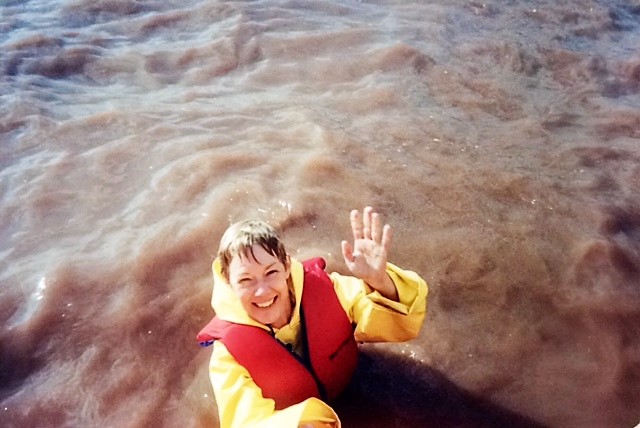
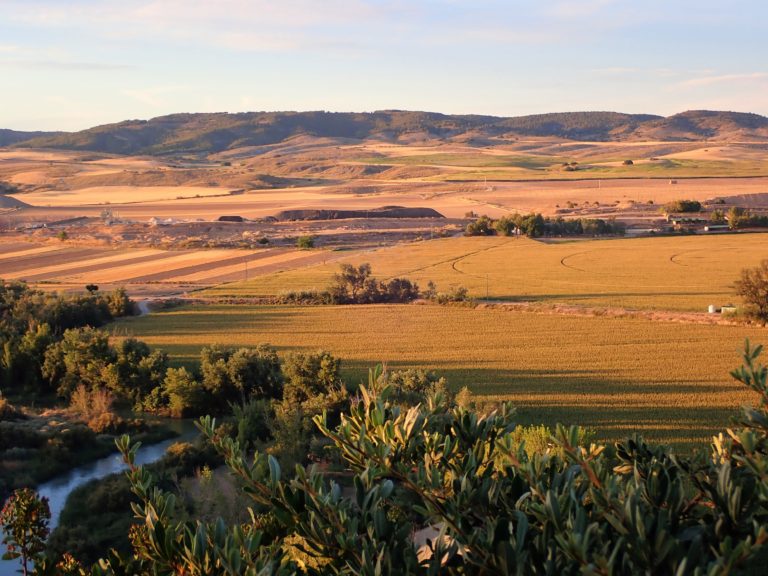
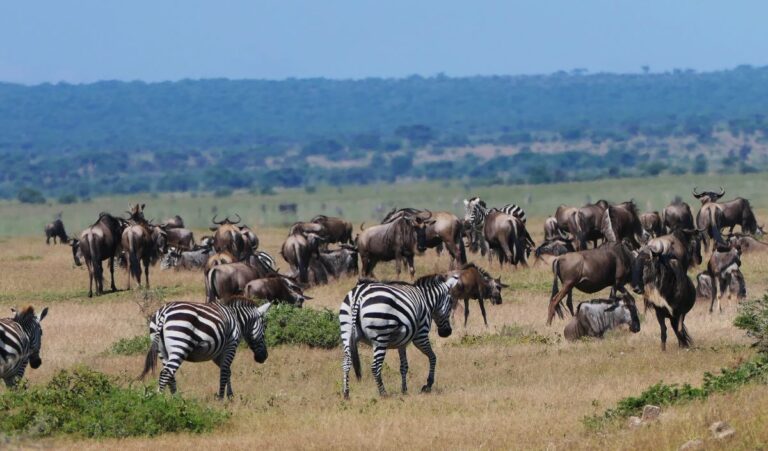
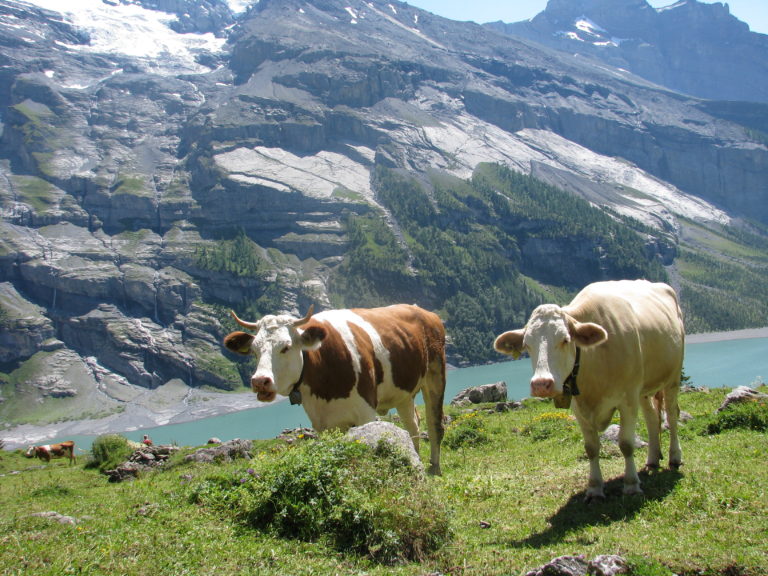
Looks like a fun adventurous trip! The pictures you captured of the butterflies are amazing! They are so beautiful.
We had a such a great experience. Holbrook Travel made all of the arrangements for us, so it was actually a much more smoothly-run trip than when we plan them ourselves!
What an amazing experience!! We get Monarch butterflies during the winter in Arizona but not like this! Thank you for sharing! I loved reading about your adventures!
Believe me, Holly, we’ve never seen anything like it. We plant milkweed next to our butterfly bush every year to attract Monarchs, but up until our trip to Mexico we’ve never seen more than a dozen at once. Thanks for your support!
they are so beautiful
What an amazing adventure! I don’t think I’ve ever really seen that many Monarch Butterflies in trees like that before. And thank you for helping to raise awareness for their preservation.
I had heard about the Monarch migration but had no idea about the sheer numbers of them until we were able to observe them in person.
What a gorgeous and fun post! We have seen the migration of Monarchs to an extent, being in California, but not like this!
Your Monarchs migrate to southern California. It is only Monarchs east of the Rockies that migrate all of the way to Mexico. However, western Monarchs are in even more trouble due to loss of habitat than their eastern kin.
How beautiful! I have no idea that Monarchs even migrated. One time my husband had a flock of them all over him in our backyard. It was really cool.
Monarchs are the only insect I know of that actually migrate.
What a unique and amazing trip. I think Mexico is so beautiful. We haven’t been there in years.
Mexico is beautiful! We’ve been twice now, to two different regions. They were so different from one another that it is hard to believe they are parts of the same country.
This looks amazing! I have wanted to go here since I saw a documentary at the Planetarium on a second-grade field trip with my son. It looks like it is magical.
Magical is a great word to describe our experience. Yes, Carrie, I think you and your son should go!
Love this! What an amazing adventure! I would go even a step further with removing pesticide use completely to help save Monarchs. Thank you for including information on the importance of saving them!
I’m with you Suzan: we never use pesticides or herbicides in our garden. Not sure that some of the larger agricultural farms would be onboard, however.
What incredible photos! We learned a lot about Monarch migration on a nature walk we took this past summer on Manitoulin Island. Fascinating! Its so sad that I dont see as many of them around as I used to as a child.
Just one more great thing that Michigan and Ontario have in common: Monarch Butterfly habitat. I hope we can all work together to save it.
What lovely photos you took! So very beautiful! I can only imagine how truly amazing the Monarchs were in person if they are so great in these photos!
Thanks, Barbara. I took these photos with my Olympus Tough camera. It was great on a bouncing horse and a dusty trail, but I was kicking myself for not having a telephoto lens!
Fascinating and amazing for sure. I bet it was just outstanding to be there and see it happening. Thanks for sharing.
An unforgettable experience for sure!
This looks incredible! I would love to be surrounded by butterflies!
This truly was an incredible experience! I hope you can make the trip one day.
What an awesome experience. I am so jealous!!! I would love to see the monarchs down there.
I know you’d love it: hope you can see the Monarch migration someday!
Wow! What a neat travel experience to be up close and personal with all of those beautiful Monarch Butterflies! Great pictures!
Thank you, Kendra. Truly a once-in-a-lifetime experience!
This looks like a great trip. I would love to see this someday. One time they butterflies detoured through my town and it was amazing to see them all flying!!
It’s mind-boggling to see the Monarchs in their wintering grounds. It’s hard to walk around without stepping on one!
OMG! What I wouldn’t give to be surrounded by all those butterflies! Amazing!
It is amazing: add it to your travel bucket list!
Sounds like an amazing adventure! The pictures are stunning. Thank you for sharing your experience.
Thanks for your support, Miranda.
If you are going to do a touristy photo op that is a good one! Amazing adventure.
Thanks, Daphne: who doesn’t love a tacky touristy photo op!
What a spectacular sight the butterflies must have been!
Spectacular is a great description!
This is truly spectacular! The pictures are amazing and the history is so very interesting. I am not much of a traveler, but you make me change my mind a bit with this article. The part where you spoke of walking back in silence because you were in such awe of what you had witnessed…I can only imagine! I have a friend in Florida who teaches about the butterflies to her class. I am very anxious to share this wonderful article with her!
Thank you for your kind comments. This is the perfect trip for someone who isn’t much of a traveler, as all of the logistics are taken care of for you.
Such a great post! I’m in Mexico and have heard about the butterflies, didn’t actually know it was a migration process. I love animals but I think I would freak out if so many butterflies came towards me. Stop, drop and roll haha
Please don’t stop, drop and roll: you’d smash hundreds of them!!
That looks like a wonderful trip! I love the butterflies! Such a once in a lifetime kinda thing! Thanks for sharing.
Amazing. The butterflies are beautiful! That must have been a wonderful trip. Thank you for the information.
this is definitely a wonderful place to visit.
your pictures are fabulous.
thanks for sharing.
Thanks, Hari. Seeing the Monarchs was definitely a wonderful experience.
Going to Mexico for this is definitely on my to-do list! I’ve not been to Mexico in years and I’ve only heard amazing things about watching the butterflies!
Melissa, I hope you can get there! You certainly won’t regret it.
This looks like an absolutely incredible trip. Mexico isn’t on the top of my international list (even though we live in Texas and right over the border) but this is seriously enticing. We’ve seen the flight of the Mexican Freetail Bats here in Texas and I would be fascinated to see them once they are down in Mexico during the winter months as well.
I would love to see the Mexican Freetail Bats! So many adventures, so little time…..
Lovely! I’ve always loved butterflies. I agree with booking with a reputable travel company, rather than doing the legwork yourself.
We don’t often use a tour company, but it made the most sense for this particular trip.
How awesome! I love monarchs. They come through Missouri as they migrate. When my kids were small we collected monarch eggs and hatched them out in containers, fed them and watched them transform. So fascinating. We’d then release the new butterflies and watch them fly away.
What a great experience for your kids!
Hola Linda,
Your pictures are so much better than mine. Before the pandemic, I spent winters in Guanajuato, Guanajuato. Twice I’ve gone to see the butterflies and I’d do it again. I took the bus from Guanajuato and stayed in the city of Morelia. It’s a lovely World Heritage city and worth a visit. Both hotels I stayed in offered day trips to see the butterflies, as do any of the hotels in centro. Magical is indeed the word. The first trip I walked up as you did. Tough but doable. The second trip I opted for the horse for the trip up. No regrets 😏
Susan, I have been thinking of you! I am so sorry that COVID kept you from going to Mexico this year. I do hope 2021 will be different! We would love to make another trip to see the butterflies, and we will keep Morelia in mind. Thanks for the tip!
What a magical experience! These photos are breathtaking.
Thank you, Holly. Being surrounded by butterflies was a surreal experience.
I love watching the Monarchs migrate each year! Living in Texas we always get the best show!
I’m envious that you are able to see the Monarchs every year. It truly was a mind-blowing experience for us.
Such an incredible experience…I would love to do this some day. I love that you added in tips to help save monarch butterflies!
I wish everyone could have the opportunity to see the Monarch migration someday! I think it would inspire more people to plant milkweed and flowers for pollinators.
The photos here are absolutely awesome. Looks like you had an amazing experience
Thank you! We did have an amazing experience.
Wow! How amazing to see so many Monarchs – and the rest of the trip looks pretty awesome too!
We really had no idea what to expect when we signed on for this butterfly trip. We were completely unprepared for the incredibly vast numbers of Monarchs!
Wonderful adventure and fabulous places to see trailing the butterflies! I miss Mexico a lot and I haven’t seen as much of it as you have!
We actually saw only a small portion of Mexico ourselves. Visiting there only made us realize we need to schedule additional trips!
Wow! How cool!
Definitely cool. No other butterfly species has a “super generation” that overwinters.
This would be so cool to see! I’ve seen some flying in batches, but nothing like this. How amazing!
We have Monarchs in our garden every summer, but here at home I’ve never seen more than ten or so at a time.